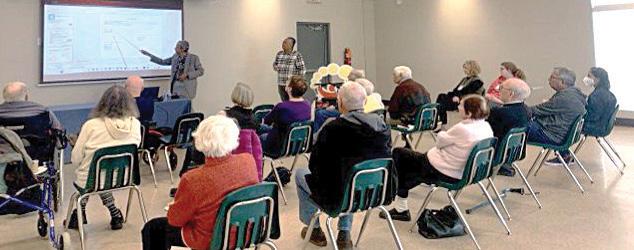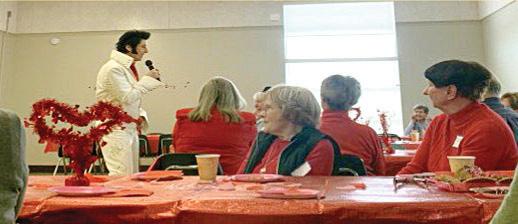






Doyle Piwniuk
This past July 1, Canada Day, I had the opportunity to speak at this year’s citizenship ceremony at the International Peace Garden, right on the border of the US and Canada. While every citizenship ceremony is incredibly important, I cannot think of a better date or venue than Canada Day in this garden. At the heart of the world’s longest border, we find a space dedicated to peace and understanding.
I am a second generation Canadian. All four of my grandparents immigrated to Canada; my paternal grandparents came from Ukraine and settled in the Roblin area, and my maternal grandparents came from England and settled in the Russell area. I am so grateful that they chose Canada as their new home just over a century ago.
Many families in the south central
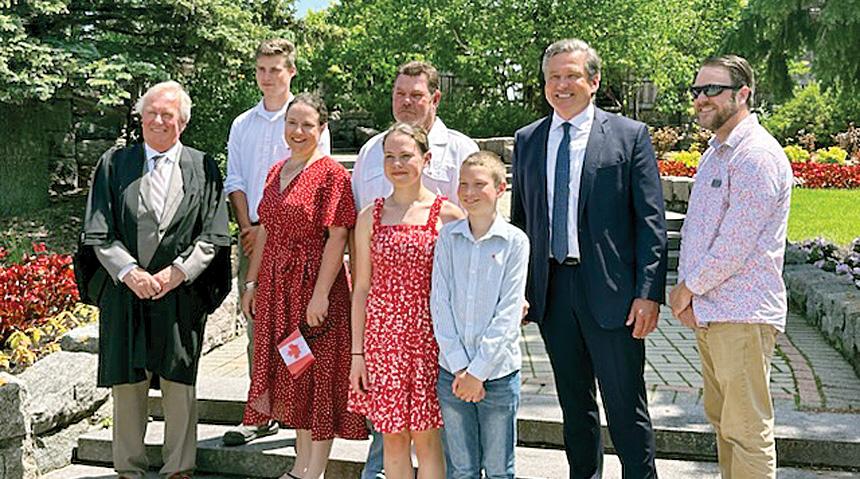
and Westman regions have ancestors from European countries such as France, England, Ireland, Scotland, Belgium, Iceland, Sweden, Norway, Denmark, Germany, Netherlands, Poland, Ukraine, and Russia.
During this year’s ceremony at IPG, over 50 individuals received their citizenship. They came from
some of the following countries: Philippines, India, China, Jamaica, Pakistan, Israel, Egypt, Lebanon, Ukraine, Nigeria, Sudan, and we had a family of five from Namibia, who are calling Crystal City and Turtle Mountain, home. All the new Canadians that were going become
Great way to spend a weekend with friends and family!
This September 21 and 22, 10 a.m. to 4 p.m., twenty local artists of Charleswood, Headingley and Tuxedo will be hosting you in their home studios at the 6th annual Harte Trail Studio Art Tour.
This free, self-guided art tour is a weekend bursting with colour, vibrancy, and boundless imagination! Your visit to the home studios of our member artists promises to be an immersive and fun experience. Chat with our tour members as they welcome
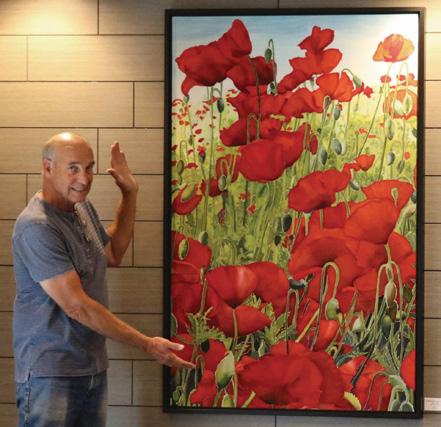
you into their creative spaces and share their passion for their art, stone carving, clay sculpture, photography and ceramics!
Whether you're an art enthusiast or simply looking for a fun and engaging way to spend your weekend, the Harte Trail Studio Art Tour offers something for everyone. Will you watch the next great masterpiece in progress? Each participating artist has their unique style and medium, offering a diverse array of artwork


Avi Bhatt, Communications Specialist WSO
Gwen Hoebig, the esteemed Concertmaster of the Winnipeg Symphony Orchestra (WSO), has announced that the 2024/25 season will be her final season in this role. Reflecting on her departure, Gwen shared, “In May 2025, I will step down from the Concertmaster position of the WSO, a position I have held for 37 years! It has been an honour to have been in this position since September 1987.”
Gwen's extraordinary tenure with the WSO began when she was unanimously chosen by the audition committee to lead the orchestra. At just 27, she had already established herself as a distinguished violinist, having studied at Juilliard and performing with orchestras across Canada, the United States, and Europe. Her early days with the WSO were marked by an unwavering commitment to the music and her colleagues.
“If you put what I do in sports terms, I am ‘Captain’ of the team,” Gwen explains. “In musical terms, not only is the Concertmaster the lead violinist who prepares and plays all the solos, but there is much that happens before the rehearsals and concerts.”
Gwen has been a beacon of excellence and leadership, contributing to the WSO's success. Her me-

We all have some moments of great pride in our communities of residence and other times where we worry about the future viability of the city or town we call our home. We justifiably celebrate the beauty of the landscapes, the benefits of the weather, the quality of the air, the friendliness of the inhabitants, and the economic prospects for residents. We also spend a lot of time expressing our concerns about the elements of the community that are not working as well. We are concerned about the state of the infrastructure, particularly road quality and potholes. We worry about speed of access to good health care, we worry about the education system, and we worry about crimes in our communities.

beautiful, and it is entirely possible to live a very good life here, but it is also very possible to become discouraged by the challenges and perceived shortage of resources we feel we must address issues we face as a community. We know that we need basic infrastructure for community life, water and sewage systems, road and transportation systems, schools, hospitals, businesses and industries, services and merchants, legal systems, security systems, social support systems, parks and recreational facilities, entertainment options, and cultural amenities.
Ingredients:
• 1 ¾ cups all-purpose flour
• 2 cups granulated sugar
• ¾ cup unsweetened cocoa powder
• 1 ½ teaspoons baking powder
• 1 ½ teaspoons baking soda
• 1 teaspoon salt
• 2 large eggs
• 1 cup whole milk
• ½ cup vegetable oil
• 2 teaspoons vanilla extract
• 1 cup boiling water
Instructions:
1. Preheat your oven to 350°F (175°C). Grease and flour two 9-inch round baking pans.

ter. The batter will be thin, but that’s okay!
5. Bake: Pour the batter evenly into the prepared pans. Bake for 30-35 minutes, or until a toothpick inserted into the center comes out clean.
Wouldn’t it be nice if there were a “no-fail” recipe for creating a perfect community, just as there are recipes for no-fail chocolate cakes or perfect potato salads? If we knew that we could create a perfect community by blending the ingredients in certain proportions and then mixing them together and baking them in a certain way, we would all be able to live in the communities of our dreams with adequate resources to provide for all the services and amenities that make our lives comfortable, healthy, safe, and enjoyable. If only it were so easy!
Manitoba is blessed in so many ways, and yet we have always had our share of challenges as well. Our province is
It would be great if there were that recipe for success that community leaders could receive that would give the perfect proportions for investment in each of these categories for a perfect community life. Alas, that option is not there, and in recent years, I have begun to believe that we are approaching the balance for these items in ways that quickly become exponentially more costly without ever having a hope of adequate resources to solve the problems with enough left over for the things that add so much value to our lives. If crime is a very large issue, our initial response is to add more police services and prisons, but we cannot possibly manage to put a police officer on every corner, in every school, and on every bus. If slow access to health care is a problem, we cannot possibly hire enough doctors and build enough hospitals to adequately deal with the health
2. Combine dry ingredients: In a large bowl, stir together the flour, sugar, cocoa, baking powder, baking soda, and salt.
3. Add wet ingredients: Add the eggs, milk, oil, and vanilla to the dry ingredients and mix until well combined.
4. Add boiling water: Stir in the boiling wa-
issues of a society that is not healthy. Perhaps we need to spend much more time thinking about how we can make our communities better by investing radically in the underlying issues that are causing our communities to experience such severe shortages in the costliest services to provide.
Are we brave enough to think radically about the health and safety of our community members and what that might mean for all of us? Maybe we would find that radically readjusting where we make community investments could provide the most incred-
More than one-hundred years before the American Revolution, the English Monarchy was overthrown; King Charles I was arrested and beheaded by the revolting populace and a democratic government was formed. Indeed, for twelve years, England was run as a republic which initiated a witch hunt of the aristocracy and clergy who were forced to flee under threat of arrest and possible execution. This new government had divorced itself from monarchy and religion. The flowering English Revolution sowed the seeds which sprouted into the American Declaration of Indepen-


6. Cool: Allow the cakes to cool in the pans for 10 minutes, then remove them from the pans and transfer to a wire rack to cool completely.
7. Frost: Once cooled, frost with your favorite chocolate frosting. Enjoy your delicious, no-fail chocolate cake!
ible benefits for all of us. I know that thinking about how we can help most people have the most healthy and productive lives might mean thinking about our total community investment in completely different ways, but I have become increasingly convinced that the ways we are approaching many aspects of community life at this time are simply not sustainable.
I remain inspired by a quote about societal change that I heard several years ago: If you are looking for social change, first you must address the items that give people hope and joy.
dence. When the English monarchy was restored, many rebels, fleeing from England, came to North America and spread their seeds of discontent.
The English Democratic Republic came to an end when George Monck, Governor of Scotland, became a turncoat after being offered a lifetime reward of £100,000 per year if he would overthrow the ruling government and allow the monarchy to be reinstated. Because of infighting within the government, Monck and his army had little opposition as they marched into London and easily took control of the regime.
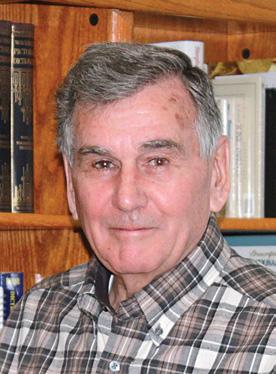
wrote Common Sense, The American Crisis, Rights of Man, and The Age of Reason, as well as Benjamin Franklin who wrote anti-establishment pamphlets, nourished the seeds of rebellion in North America which eventually bloomed into the Declaration of Independence. In England, Paine was tried in absentia and was given the death penalty. Despite this, Paine went to France where he was instrumental in starting the French Revolution.
King Charles I’s son, who had been living in exile, returned to England and was crowned as Charles II, King of England, Scotland and Ireland as well as the Supreme Governor of the Church of England.
This new king had never set foot in America, but this did not prevent him from giving his cousin, Rupert, 954,176,000 acres of land in North America which became known as Rupert’s Land. Through various Papal Bulls, known as Doctrines of Discovery, God had authorised King Charles to give away land he did not own and had never seen. These Papal Bulls not only allowed, but encouraged, Christian countries to seize lands from non-Christians and to kill or enslave the inhabitants of the seized properties. Strangely, these Papal Bulls are still entrenched not only in Canadian law, but also in international law.
After the monarchy had been restored in England, discontent over the tyrannical behaviour of monarchs continued in secrecy. Many anti-monarchy citizens fled the country but continued to plot while in exile. Men like Thomas Paine who
As far back as the Roman Empire, rulers presented themselves as caring philanthropists who offered the populace bread and circuses. Rather than being altruistic, these rulers were conniving wolves in sheep’s clothing. The masses did not realise they were being enticed into a prison which has invisible bars. They ended up being no different than animals in a zoo which are given food and bedding and expected to do nothing in return except provide entertainment for gawkers.
Britain has produced several documentaries such as The Estate, Benefits Street, Benefits Britain, Real Britannia, and Welfare in Britain which describe how millions of citizens who have no job and no means of making a living are given housing and living expenses. These people are expected to give nothing in return. Of what use are these people who sit around drinking, smoking, taking drugs, getting tattoos, playing with smartphones and making babies? Their children end up living the same life as their parents and it goes on from generation to generation. They are like animals in a zoo which have no use except for entertaining smug onlookers who put on an air of superiority.
Earl Nightingale, in his books and au-
dio recordings, tells us how a free key to get out of the zoo is available to everyone at no cost. Local libraries provide knowledge on how to better oneself through education. Anyone may escape the zoo by learning new skills. The key is to gain knowledge, learn a skill and escape the zoo by obtaining meaningful employment or starting a business. Once anyone does this, they will feel better about themselves, and life will have meaning. Anyone can obtain the necessary qualifications to get a good paying job or provide a service. Through education, people may acquire beneficial habits like learning how to get out of bed in the morning and go to work. As children, these people never developed the habit of getting up early and going to school. They follow their parents’ habit of sleeping late into the day. Anyone can learn to change their sleeping habits so they can retain a job.
A pessimistic senior citizen I have spoken to, predicts we will be following the same pattern which we have followed for thousands of years. Whenever welfare gets out of hand, we have a war. The prediction is, there will be another war, millions will be slaughtered, and millions of homes will be destroyed. We will then go through a process of rebuilding. There will be a period of prosperity as money and jobs become plentiful and everybody begins to work and enjoy the wonderful feeling of accomplishment.
Will we get the future as predicted, or do we try something new? Do we try Earl Nightingale’s plan which worked very well for him and for millions of others?
This plan is for individuals to go to the free library, read educational books, take courses, and become fruitful citizens who contribute to the welfare of the nation? Or will history repeat itself, and we end up going to war?
Wayne Weedon is an Indigenous Manitoba writer of novels and short stories. To sample his wonderful work go to Wattpad.com.

Follow us online at: lifestyles55.net
Facebook: Lifestyles55
PUBLISHER
Pegasus Publications Inc.
EDITOR Dorothy Dobbie dorothy@pegasuspublications.net
ART DIRECTOR
Karl Thomsen karl@pegasuspublications.net
GENERAL MANAGER
Shauna Dobbie shauna@pegasuspublications.net
CONTRIBUTORS
Hon. Uzoma Asagwara, Jeff Bereza, Avi Bhatt, Lori Blande, Gary Brown, Dorothy Dobbie, Shauna Dobbie, John Einarson, Kelvin Goertzen, Stefano Grande, Jim Ingebrigtsen, Ian Leatt, Myron Love, Fred Morris, Doyle Piwniuk, Seneka Samarasinghe, Trudy Schroeder, Gabrielle Swan, Shandy Walls, Wayne Weedon.
Canadian Publications mail product Sales agreement #40027604
PRINT ADVERTISING
Gord Gage • 204-940-2701 gord.gage@pegasuspublications.net
DIGITAL ADVERTISING
Caroline Fu • 204-940-2704 caroline@pegasuspublications.net
SUBSCRIPTIONS
If you would like to receive Lifestyles 55, we offer both monthly newspaper and online formats. To place your order, call 204-9402700. Subscriptions are $48.00 per year, plus tax. American Express, MasterCard, Visa and cheque accepted. To view a back issue online visit lifestyles55.net
Published monthly by:
Pegasus Publications Inc. PO Box 47040, RPO Marion Winnipeg, MB R2H 3G9 204-940-2700 whatsupwinnipeg.ca
DISTRIBUTION
Available at more that 20 rural towns and cities as well as more than 100 locations in Winnipeg. If you would like bulk copies of this publication, contact Gord Gage at (204) 9402701 or gord.gage@pegasuspublications.net. Also available digitally at whatsupwinnpeg/ lifestyles and on Facebook: Lifestyles55
EDITORIAL SUBMISSIONS
Call Dorothy Dobbie at (204) 940-2716 or email dorothy@pegasuspublications.net for more information and guidelines.
Any opinions expressed in columns by our contributors are their own opinions entirely and are not necessarily shared by Pegasus Publications Inc. All information presented by the contributors is the responsibility of the writers.
Lifestyles 55 is published monthly. Reproduction in part or in whole is prohibited without seeking permission in writing from the publisher.
Copyright Pegasus Publications Inc.
There is no conspiracy. There is no attempt to remove local authority from municipalities. There is no outside group planning to have the WEF take over the farm industry or any of the other things some very misinformed people have been talking about since the draft plan was revealed.

Dorothy Dobbie
How do I know?
I was there at the beginning. I helped then executive director, the brilliant Colleen Sklar, prepare a plan to present to the newly formed Pallister caucus in 2016. Colleen has moved on now to head up the administration of the purchasing agent of the plan, JohnQ Public.
Boiled down to its essence, the plan is a way to find spending efficiencies while improving services to the 17 municipalities surrounding Winnipeg. In a sparsely populated province such as Manitoba, which has one big city and many small ones, co-operative planning just makes sense. Interestingly, Winnipeg was not the first to think of this, neither were all the other cities that now have similar organizations. This group was founded in 1998 and floundered for the next number of years until Colleen came along. I was introduced to her by former councillor Grant Nordman who believed in her and the work she and the councillors and reeves were doing. She was not given an easy mission, because each jurisdiction was very jealous of its powers and rightly so, but eventually, they managed to cobble together a plan that all accepted.
While this is not a WEF plan or a grab by developers, concerns are being raised that the City of Winnipeg is bidding for ascendency so it can alleviate its own bad money management. I have no idea if this is true but the representatives around the table are all equals and many votes win over one vote, so if it is a bad deal the participants have to answer for it, not just blame Winnipeg.
What I do see is that some of the verbiage is inflammatory among some groups because it unnecessarily mentions “UN” and “Global” standards. (“It is the product of a collaboration between municipal, federal and global experts. This plan "aligns with the objectives of the United Nations 2030 Sustainable Development Goals" for a "sustainable and prosperous future for people and the planet".)
While the Winnipeg Metropolitan Region board consulted widely in the search for best practices, it is not dictated to by anyone outside of Manitoba.
In January 2023, the previous government announced a new agency, the Capital Planning Region. Here is a part of the government announcement. “The Capital Planning Region Regulation came into effect on January 1, 2023, formally establishing the Capital Planning Region (CPR), a statutory corporation, with a Board of Directors responsible for managing, or supervising the management of, the business and affairs of the CPR in accordance with its mandate.
“The CPR currently operates as the Winnipeg Metropolitan Region and is comprised of 18 member municipalities: the Cities of Winnipeg and Selkirk, the Towns of Niverville and Stonewall, the Village of Dunnottar, and, the Rural Municipalities of Cartier, East St. Paul, Headingley, Macdonald, Ritchot, Rockwood, Rosser,

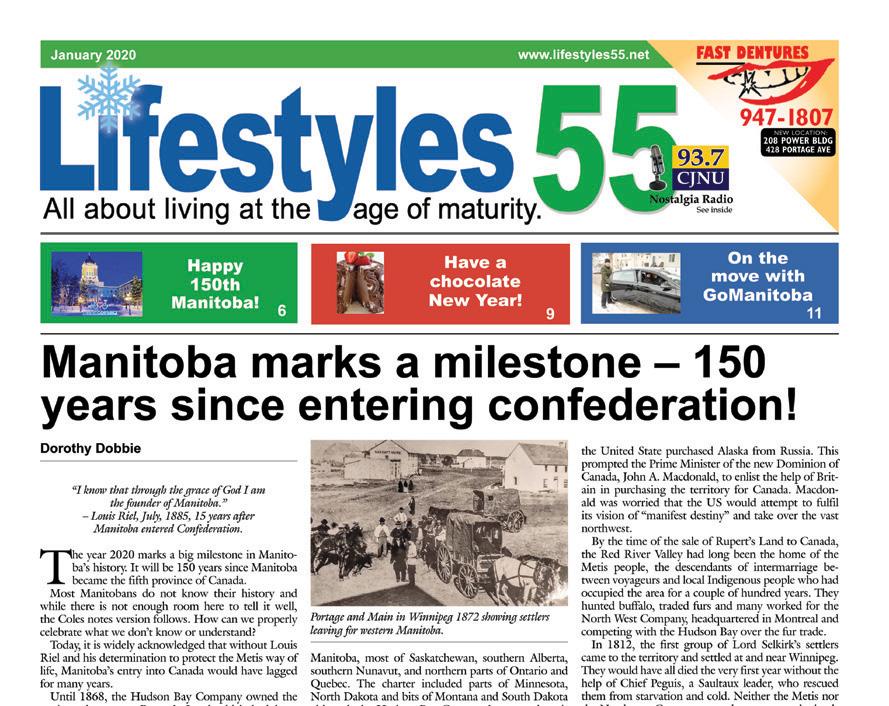



The 18 municipalities that currently make up the Winnipeg Metropolitan Region.
Springfield, St. Andrews, St. Clements, St. François-Xavier, Taché, and West St. Paul. In addition to one representative for each member municipality on the Board of Directors, the Minister of Municipal and Northern Relations may appoint up to four directors to the CPR Board, in accordance with Manitoba’s Agencies, Boards and Commissions appointment process.”
Board chairs were appointed: Michael Moore, formerly the executive director of the Manitoba Homebuilders Association, was appointed chair, and Elisabeth Saftiuk, vice president of policy and government relations at the Manitoba Chambers of Commerce, has been appointed vice-chair. Chief Gordon BlueSky of Brokenhead Ojibway Nation has been appointed as a voting member-at-large representing the Treaty One Development Corporation. It is good that Chief Bluesky is on the Board. Indeed. Colleen Sklar, when she was executive director, actively sought advice from Indigenous communities within the region. Their communities are rightfully part of the process.
The recent document and hearings are just part of the process; however the organization has done a dismal job of communicating with the public. Mike Moore admits that some of the language also surprised him, and he has heard and taken note of what concerned residents have had to say. He agrees that the language should be revised. It appears that at least five of the municipal partners, including Headingley, Ritchot, Selkirk and Niverville agree, withdrawing their support for the plan until changes are made. Municipal and Northern Affairs Minister Ian Bushie said the government will pass new legislation allowing for opt outs.
At the end of the day, folks, the new statutory corporation is designed to provide continuity and move the agenda forward. For details about how this will work and to alleviate some of the fears and erroneous information, those interested can go here to review the document and highlights of the Act. https://www. manitoba.ca/mr/land_use_dev/pubs/guide-regional_planning_ and_major_dev.pdf
Do express your opinions but try to focus on real concerns. Demand answers to questions to help improve the proposals but try to look at the plan more objectively knowing that in the end it is designed to save your tax dollars and give you better services.

Pierre Poilievre is a suitable leader for our country and is better prepared for the job than many in the past. He is smart, capable and politically savvy. He is a thinker and an avid reader who understands the files, which he actually reads, and asks to know more. Pierre speaks three languages: English, French and Spanish. He understands the human need to strive to thrive while holding out a helping hand to those in trouble.
“My parents taught me that it didn’t matter where I came from, but where I was going,” Pierre Poilievre said, in his leadership victory speech. “It didn’t matter who I knew, but what I could do. That is the hope I want my kids to inherit.”
He is a man of his times. He comes from a humble background. He and a half bother were adopted as babies by Saskatchewan Francophone schoolteacher parents who raised them in Calgary. The couple divorced when Pierre was 12, his father coming out as gay shortly after. His birth mother was a 16-yearold girl recovering from her own mother’s recent death. He has reunited with her and his maternal grandfather in adulthood but also maintains his familial relationship with both adoptive parents. In his acceptance speech as leader of the Conservative Party of Canada, he said that his family was “a complicated and mixed-up bunch … like our country.”
On other policy fronts, I would heartily applaud a removal of the pointless carbon tax, but I would also expect, knowing how deeply conservatives love the land, positive policies that foster good stewardship of natural spaces. We know that he respects the working man and woman, so labour laws will not see any overcorrection. I hope he reforms the equalization formula and creates a new deal for health reform, and that he will brush away silly policies such as the ridiculous idea of putting free tampons in men’s washrooms.

Growing up in Calgary, he was into sports in school, just a normal, middleclass kid. But he discovered a love for politics at an early age. Although he soon went to work as a political staffer, Pierre has a degree in international relations and was, for a brief period, a business partner in a political consulting firm.
His wife, Anaida, an immigrant from Venezuela, was also a staffer. She grew up in Quebec from the age of 8 and graduated with a degree in communications from the University of Ottawa. She later founded an online magazine called Pretty and Smart Co.
They married in 2017, eloping to Venezuela. They have two children.
As a young staffer, many thought Pierre Poilievre an insufferable little prig, and he would be the first to admit that he probably was. So too, are many kids, especially smart kids. But age and experience have a leavening effect as demonstrated by our own current premier who regrets the excesses of his youth.
At 45, Pierre is now in his prime, still full of energy and ready to make the changes that Canada so desperately needs. What kind of changes? Well, we can expect them to focus on good governance and lower taxes.
Pierre will take a modern approach to relations with First Nations (after all, it was his former boss, Steven Harper who started to move toward reconciliation). At the recent AFN meeting, he told the delegates that "We believe that economic reconciliation is part of social progress. We need jobs and opportunity for First Nations communities." He received a standing ovation at the end of his speech I was told by a First nations friend, who attended and who said the media attention to the detractors was unwarranted.

No, Poilievre is not equipped to lead Canada. He was first elected at the tender age of 25 and his previous professional experience was limited to roles assisting other politicians. What deep insights does he truly hold about the everyday life of the average Canadian?
Knowing how he values individual freedom, we will see a return to normal discourse where nobody gets “cancelled” for having an opinion.
He is often called a “populist” as an insult, but applied accurately it really describes him as a man of the people, one who responds to the needs and wishes of “everyday” citizens. I, for one, find that admirable. His slogans, which leave me cold, resonate with many people because they are easy to understand, direct, and reflect the quiet understanding of the general population.
He cares about homelessness and drug addiction but sees treatment as the best alternative to funding the drug supply that is currently being siphoned off by criminals.
Pierre Poilievre is not an elitist –just the opposite, yet he has been able to gain the respect and admiration of some of Canada's wealthiest and most influential people, because he is his own man.
The opposition is doing its level best to paint him as a radical, antidemocratic, abortion loving, anti-gay, Trump-type, etc., etc. Among those who listen and who believe in a leftwing agenda, this has some power, but among the population at large, none of this sticks – not just because it is provably untrue, but because his whole life backs up the opposite.
Pierre is tolerant, forgiving and open to ideas – just dammed smart, an unforgivable quality among some.
He is a very human guy, His colleagues tell me that he can be extremely funny and loves to play practical jokes. He peppers his speeches with good natured humour. But he is forcefully determined to do what he believes is right for a country currently in disarray.
Like all leaders, he will stumble from time to time but less, I think, than many others. We have already seen his demeanor modified to reflect the grave responsibilities soon to be thrust upon him. In question period, he has dialed down the rhetoric and especially the tone. As we proceed through the next few months of the upcoming election year, expect to see a more thoughtful approach with more substance over style.
Is Pierre Poilievre a “suitable” leader to take Canada forward? I cannot think of anyone more suited now –or since Brian Mulroney.
His communication style is a big turnoff. It is overly sharp, excessively rhetorical, and frankly, immature for someone leading a political party. He calls his opponents “wackos” and reduces disagreements to sarcastic quips. It does not bode well for fostering a working political environment. How could he possibly ever take a collaborative approach to politics? I get that the Opposition should oppose the government – it’s right there in the name – but his approach leans more towards antagonism than constructive criticism.
the asker of following a Liberal agenda; this is known in debate circles as argumentum ad hominem: ignore the question and attack the questioner. It is a tiresome trope. One important role of news media is to be critical of all politicians, so of course they are critical of Conservative politicians. Liberal pols deflect unwanted questions by speaking about their positive talking points instead; it’s not much better, but it doesn’t malign the question-asker. Demeaning the media is churlish. It is also dangerous for the country; who can you trust now?
Leadership demands not only the right policies but the ability to inspire and unify a diverse populace. Poilievre's confrontational approach and the controversies surrounding his statements and actions contribute to a polarized public perception. His leadership style is divisive rather than unifying, which is critical in a country marked by diverse opinions and backgrounds.
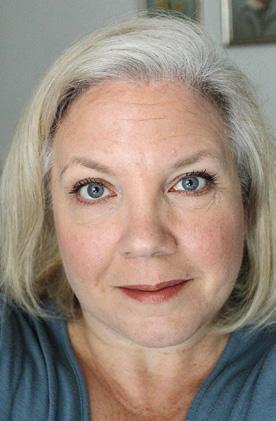
Poilievre’s economic policies give me little hope, even if you strip away his bizarre stances on cryptocurrency and firing the Governor of the Bank of Canada. He wants to cut back on government spending, which is fine, but I’ve seen how Conservatives do this before. They will cut a bunch of expenses out of the budget and then give the money saved back to the taxpayer, often as a cheque. Everybody likes to get a cheque, but the problem here is that those cheques are just another government expense. He’ll cut taxes as well, which is alright, except that the expenses have already been cut, cheques sent out, and the deficit is still really high. When does that get paid down?
Poilievre’s views on climate change policies and the carbon tax will not help Canada address environmental challenges. Despite overwhelming evidence and expert opinion supporting the effectiveness and economic efficiency of carbon pricing, he clings to the simplistic mantra of “axe the tax.” It’s understandable, given that in a poll conducted last winter, 91 percent of his base said the cost of living should be a priority in Canada even if it damages policies to fight climate change. Sticking with the carbon tax is a hard decision and Poilievre won’t make it. Leaders should make difficult decisions even when they are not politically expedient.
Furthermore, the Bank of Canada (which is, as pointed out above, disdained by Poilievre) says that carbon pricing has caused less than 1/20 of the upswing in inflation since the pandemic. Hundreds of economists have signed a letter (you can see it here: https://sites.google.com/view/ open-letter-carbon-pricing) saying that, although carbon pricing isn’t perfect, it is cheaper than other solutions and it is effective.
Poilievre has drunk the Kool-Aid served up by Trumpian populists that the media are biased against conservative ideals. He typically responds to a journalist’s questions by accusing
To win an election in our first-past-the-post system, a party generally needs a little better than 1/3 of the votes, effectively spread across the country. The Conservatives got plenty of votes in the last two elections –more than the Liberals, who won the elections. The reason the Conservatives didn’t win is that their support, while hefty in the West, was too thin in cities, not just Toronto, Montreal, Ottawa and Halifax but also in Winnipeg and Vancouver.
Right now, the Cons have something in their favour: the waning approval rating of Justin Trudeau. That might be enough to propel Poilievre into the PMO, but relying on this is risky for him. Moreover, it inadvertently grants excessive influence to the Liberals, more than a genuine contender might prefer. Winning the next election through substantive political engagement and strategy would be more advantageous and, really, more honest. Furthermore, unforeseen events could shift the political landscape before the next election, including a possible resignation by Trudeau.
Poilievre needs to broaden the appeal of the Conservatives. He needs to offer constructive alternatives whenever he criticizes the government. While there is a common belief among political strategists that proposing solutions can backfire if the governing party adopts them, it doesn’t necessarily have to be the case. Poilievre could benefit from focusing on key areas like economic stability, healthcare, and climate change, and from refraining from immature taunts and engagement with extremist factions, which do not reassure the undecided electorate. Doubling down on his sophomoric quips (“Just-inflation”? Cute once, but it’s done) and courting more and more extremist groups (Diagolon, who he visited when he saw their anti-Trudeau signs from his bus, is a neo-fascist militia group) is just driving undecided voters away.
This guy seems to be having a blast, making fun of the Libs right now. People like me remain unimpressed. His tactics as more performative than substantive. The emperor has no clothes.
The Winnipeg Chamber of Commerce reached a momentous milestone last year. On June 13, 2023, the Chamber celebrated its 150th anniversary with a large open-air party at True North Square. More than 500 Winnipeggers turned out to enjoy Party on the Plaza, a day of dance, music and other entertainment by local performers highlighting the talents of our diverse community, food and refreshments and a chance to win one of numerous prizes donated by Chamber members.
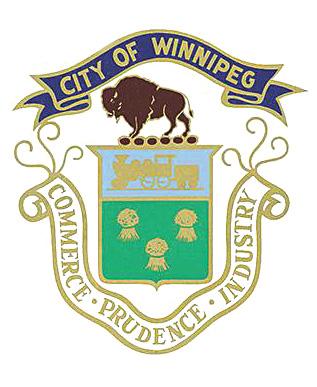
Myron Love
Celebrating 150 years of Winnipeg
“The celebration however was not limited to just the one day,” notes Loren Remillard, the Winnipeg Chamber of Commerce’s president and CEO. “Because this is such an important milestone for us, we decided to hold a year’s worth of programming including sharing members’ stories and hosting monthly luncheons, focusing on our past, present activities and future.”
The Winnipeg Chamber of Commerce is older than Winnipeg itself. The only organization that maybe has been around longer, Remillard suggest, is the North West Company.
Originally known as the Winnipeg Board of Trade, the Chamber was founded by a group of far-sighted business leaders in the small community of about 8,500. People such as James Ashdown, Andrew Bannatyne, John Higgins, Colin Inkster and William Kennedy were among them.
“Our founders recognized that Winnipeg was a growing city with the potential to be a great city, a real centre of commerce,” Remillard says.
He adds that the members of the Board of Trade were instrumental in having Winnipeg become incorporated as a city.
And the City of Winnipeg and the Chamber of Commerce have been working hand in glove ever since.
“We have three principal functions,” Remillard explains. “On the one hand, we advocate for and lobby on behalf of our members with the municipal and provincial governments.”
As well, the Chamber supports small business in a variety of ways. Its group benefit insurance program –one of the first such chamber of commerce programs in North America – allows businesses with perhaps only a couple of employees to provide said employees with group benefits that would not otherwise be available to them. Other benefits include Document certification, networking opportunities, cost saving programs and a speaker’s series.
Finally, there is the Chamber’s ongoing effort to better the community as a whole. “The Chamber was instrumental in founding the United Way in 1965,” Remillard points out. “We worked with the police force to introduce the Winnipeg crime Stoppers program. We work closely with the Winnipeg Labour Council. We were involved in planning the expansion of the James Richardson International Airport In the 1970s and ‘80s, the formation of CentrePort Canada, and we initiated a number of industrial skills training programs.
“We don’t focus just on our members,” he continues. “We seek the betterment of all segments of our community. We recognize that you can’t have a strong community unless everyone benefits and contributes. Our members can only succeed if everyone shares in that success.”
The Chamber, Remillard reports, currently has over 2,000 members – 30% of them based downtown and the rest from the suburbs - representing businesses of
James Henry Ashdown (1844-1924)
John Balsillie (1839-1906)
Andrew Graham Ballenden Bannatyne (1829-1889)
Victor Beaupré
Curtis James Bird (1838-1876)
Alfred Boyd (c1836-1908)
Pascal Bréland (1811-1896)
Alexander MacDougall “A. M.” Brown (1820-1895)
James Clouston
Robert Cunningham (1836-1874)
William Drever (1821-1887)
R. J. Dunstan
William Flett
Frank Gingras
Edward Henry George Gunter Hay (1840-1918)
John Higgins (1807-1884)
Thomas Howard (1845-1903)
Colin Inkster (1843-1934)
John Inkster
George Kennedy
William Kennedy (1813-1890)
Joseph Octave Lemay (1829-1892)
Alexander Logan (1841-1894)
William H. Lyon (c1833-1897)
William J. Macaulay
Alexander McArthur (1843-1887)
Andrew McDermot (1789-1881)
John McGregor
James McKay (1828-1879)
John Henry McTavish (1837-1888)
Onis Monchamp
Robert Morgan
Alexander “Sandy” Murray (1839-1913)
Robert Patterson
Joseph Royal (1837-1902)
J. G. Sonderman
Robert Tait (1830-1912)
150 years worth of President/Chairs of the Winnipeg Chamber of Commerce
The names of these community leaders are a history of our City In 1998, the title of President changed to Chair.
Period President / Chair
1879 Andrew Graham Ballenden Bannatyne (1829-1889)
1880 Arthur F. Eden (c1852-?)
1881 William H. Lyon (c1833-1897)
1882 Joseph Mulholland
1883 Charles John Brydges (1827-1889)
1884-1886 Kenneth McKenzie
1887 James Henry Ashdown (1844-1924)
1888 George Frederick Galt (1855-1928)
1889 James Redmond (1853-1926)
1890 Robert Jones Whitla (1846-1905)
1891 Stephen Nairn (1838-1900)
1892 James Elder Steen (1846-1909)
1893 Frederick William Stobart (1859-1935)
1894 William Bain Scarth (1837-1902)
1895 Robert Thomas Riley (1851-1944)
1896 F. H. Mathewson
1897 David Wesley Bole (1856-1933)
1898 Augustus Meredith Nanton (1860-1925)
1899 Edward Lancaster Drewry (1851-1940)
1900 Dawson Kerr Elliott (1853-1945)
1901 William Georgeson (1859-?)
1902 John Russell (c1850-1905)
1903 George Reading Crowe (1852-1924)
1904 Hodgson Wilberforce Hutchinson (18621949)
1905 A. L. Johnson
1906 Andrew Strang (1849-1913)
1907 George Frederick Carruthers (1846-1918)
1907-1908 John Thomas Blandell Persse (1861-1927)
1908-1909 Henry Martyn Belcher (1856-1923)
1909-1910 Edward Daniel Martin (1856-1938)
1910-1911 Frederick William Drewry (1855-1927)
1911-1912 Henry Bruce Gordon (1855-1931)
1912-1913 Ezra Arthur Mott (1869-1951)
1913-1914 John Stovel (1858-1923)
1914-1915 Melbourne Francis Christie (1864-1944)
1915-1916 George Nelson Jackson (1861-1944)
1916-1917 Albert Livingstone Crossin (1868-1956)
1917-1918 Alvin Keyes Godfrey (1871-1951)
1918-1919 John Edward Alfred Wildman (18651963)
1919-1920 William Henry Carter (1874-1962)
1920-1921 Edward Parnell (1859-1922)
1921-1925 William Andrew Travers Sweatman (18791941)
1925-1927
Robert G. Persse (1879-1946)
1927-1928 F. Hedley Marsh
1928-1931 Duncan Cameron (1865-1948)
1931-1932 John McEachern (1867-1942)
1932-1935 Wesley McCurdy (1881-1961)
1935-1936 Frederick John Charles Cox (1860-1939)
1936-1938 Charles Ernest Stockdill (1881-1960)
1938-1940 E. C. Mackay
1940-1941 George J. Cameron
1941-1943 George Henry Stewart (1874-1947)
1943-1944 John Duncan McDonald (c1879-1965)
1944-1947 Milton Daniel Grant (1874-1956)
1947-1949 Ralph Dennistoun Baker (1895-1960)
1949-1951 Allan Harvey Watson (1891-1978)
1951-1952 Richard Henry Gardyne Bonnycastle (1903-1968)
1952-1953 A. E. Longstaffe
1953-1954 G. S. Thorvaldson
1954-1955 John Kerr
1955 Ronald F. Swaine
1955-1956 Alexander Robertson (1909-1985)
1956-1957 Ronald F. Swaine
1957-1958 R. S. Malone
1958-1959 William Scott Neal (1914-1993)
1959-1960 John Stuart “Jack” McMahon (19042000)
1960-1961 George Edward Sharpe (1908-1985)
1961-1962 George Richard “Dick” Hunter (19171995)
1962-1963 R. G. Barton
1963-1964 Douglas Cole “Doug” Groff (1912-1993)
1964-1965 Alexander Edson Boyd (1912-1998)
1965-1966 Clare E. Atchison
1966-1967 William Stanley “Bill” Dunlop (1912-1991)
1967-1968 Allan Randolph McPherson (1914-2000)
1968-1969 Arthur A. Elliott
1969-1970 David Rothstein (1914-1997)
1970-1971 William Leslie “Les” Wardrop (1915-2017)
1971-1972 William Arthur Johnston (1914-1997)
1972-1973 Lawrence Oliver “Lawrie” Pollard (19282019)
1973-1974 Graeme Thomson Haig (1923-1993)
1974-1976 Mel Peaslee Michener (1930-2017)
1976-1977 Norman Louis Coghlan (1927-2013)
1977-1978 Hugh Delaney
1978-1979 Paul Herriot
1979-1980 James “Jim” Cartlidge (1925-2016)
every stripe. “We take pride,” he says, “in the fact that –on a per capita basis – we have one of the largest chamber memberships in the country. Seventy-five percent of Winnipeg businesses are Chamber members.”
He adds that the Chamber membership also reflects the larger community diversity. “We were the first chamber of commerce in Canada to have a First Nations president and the first to have a president of Korean origin,” he notes. In 2019, Jessica Dumas, an entrepreneur and president of her own business, Jessica Dumas Coaching and Training.
Remillard reports on a recent survey of its members which – not surprisingly – identified the level of crime in our downtown as their number one concern. “On this issue,” he says, “we are co-ordinating with our partners – such as the Winnipeg BIZ, the Exchange district BIZ and the police to develop solutions to this problem. As an organization, our Chamber has always

1980-1981 Gerald F. Reimer
1981-1982 John Raymond “Jack” Hignell (1930-2015)
1982-1984 Lloyd McGinnis
1984-1985 Keith Godden
1985-1986 Edward John “Ed” Martens (1941-2015)
1986-1987 John Doole
1987-1988 Dorothy Dobbie (First woman)
1988-1989 E. Michael
1989 Mike Hill
1989-1990 Herb Middlestead (?-2010)
1990-1991 “Buddy” Brownstone
1991-1992 Steve Childerhouse
1992-1993 Sandy Hopkins
1993-1994 Terry Christall
1994-1995 John Granelli
1995-1996 Trevor Hayden
1996-1997 Dave Angus
1997-1998 Carol-Anne Borody
1998-1999 Joe Barnsley
1999-2000 Irene Merie
2000-2001 Murray Sigler
2001-2002 Walter Hill
2002-2003 Robert Kreis
2003-2004 Catherine Kloepfer
2004-2005 Philip Sheps
2005-2006 Larry McIntosh
2006-2007 Trevor Sprague
2007-2008 Ken Jones
2008-2009 Jeffrey Hartry
2009-2010 B. J. Reid
2010-2011 Judy Murphy
2011-2012 Brian Bowman
2012-2013 Brian Scharfstein
2013-2014 Jodi Moskal
2014-2015 Michael Legary
2015-2016 Priti Mehta-Shah
2016-2017 Wadood Ibrahim
2017-2018 Johanna Hurme
2018-2019 Scott Sissons
2019-2020 Jessica Dumas (First Indigenous)
2020-21 Sheeraj Patel
2021-2022 Mark Jones
2022-2023 Liz Choi
2023- 2024 Jeanette Montufar-McKay 2024-2025 Kelvin Selch
been committed to the downtown. We have always had our head office downtown.”
Despite the current problems downtown, the Chamber CEO foresees a bright future for our city. A lifelong Winnipegger, he observes that Winnipeg is growing at a rate that he has never seen before.
“We are getting so many more people choosing to live here,” he points out. “One of our major advantages is housing affordability. Younger people in places like Toronto, Calgary and Vancouver can’t afford to buy a house. One of our challenges is to create the conditions that would persuade more younger people to choose to come here. We need to have all of our stakeholders come together to develop a strategy for growth – and we need to build more infrastructure.
“Our ongoing goal is to make Winnipeg a destination for new businesses and a city where younger people want to raise their families.”




One of the hallmarks of southeastern Manitoba is the near continuous growth that local communities have seen over the past few decades. Communities like Steinbach and Niverville have been ranked among the fastest growing in the province, and even the country. This often results in questions from those in other areas about what drives this consistent population growth. And that is a question that doesn’t have an easy or singular answer.

Economic opportunities and community safety are often cited as reasons why communities grow, and no doubt those are key factors. Less mentioned is the quality of the schools. And yet, many studies show that one of the key factors in families deciding upon a place to live is if there are strong, safe and welcoming schools in the community. By this metric, the Hanover School Division (which encompasses Steinbach, Niverville, Hanover and Landmark) has always done well and is at least part of the reason why local communities have seen such steady growth.
Of course, that growth also leads to the need for more and bigger schools. Niverville recently opened a new high school (I was pleased to be serving as the Minister of Education at that time) and a new elementary school in Steinbach is well underway. Expansions to schools in Mitchell and Blumenort also reflect the growth of those communities. The Steinbach Regional Secondary School is today more than double the size it was when I graduated from it in the late 1980s and it is in need of another expansion as it is one of the largest high schools in western Canada.
In addition to growth however, there have been a couple of other things that have caught the attention of
parents and those interested in education. One of these is that Hanover was the first school division in Manitoba to implement a cell phone ban in their classrooms (at the K-8 levels). This followed a pilot project in one of the Steinbach middle schools that showed that there were significant positive outcomes for learning and for mental health. For parents who have long worried about the effects on their children of too much screen time this likely wasn’t a surprise.
But the fact that the Hanover School Division both launched a pilot and then decided to expand the ban across the division speaks well of local school officials who saw a problem, studied it and then acted upon it. In fact, just recently the provincial government picked up this policy and made a ban on cell phones in classrooms province wide. It is notable that a policy that began in southeast schools was seen as worth adopting across the province.
There is another trend that was reported on recently that has a particular impact on southern Manitoba. Despite a good reputation in local schools and continued growth, the number of parents choosing to homeschool their children increased significantly in Manitoba last year. This trend was most notable in southeastern and southcentral Manitoba. This is in addition to parents who choose to send their children to independent schools. Judging by the expansion and growing number of independent schools, it would seem likely those numbers are increasing as well in Manitoba.
As the former Minister of Education and as a longtime MLA, I have always been a strong defender of the right for parents to be able to choose homeschooling

or independent schools as an option for their children. However, the growing numbers may indicate that at least some parents are feeling that they have no choice but to exercise these alternatives because there is something about the public education system that is causing them to vote with their feet and seek other options. This is something that education officials in the public system would be wise to consider more closely. As the number of parents opting out of the public education system grows, it leaves open questions about whether there is an eroding trust or questions about the public education system itself. Regardless, society benefits from a strong public education system. And while the right to alternative delivery of education such as independent schools and homeschooling needs to be protected, those decisions should be made because parents feel that is the best option, not because it is their only option.
Kelvin Goertzen is the current MLA for the constituency of Steinbach. He has served in several Cabinet roles including Manitoba Premier and Deputy Premier
The need is there. The money is there. Why not add an MRI to the new Portage la Prairie Hospital?
Jeff Bereza, MLA for Portage la Prairie
It is impossible to have a conversation in Portage la Prairie or the surrounding area and not hear of the need for an MRI in the new Portage Regional Health Centre, scheduled to open in 2026. Following a letter sent to the Minister of Health (and copied to me) by a group of 35 local doctors highlighting this need, my office has received an overwhelming amount of correspondence and feedback on the topic. To date, over 3,000 people have taken the time to sign our petition, and more people are stopping by my office to sign it every day.
We are hearing from patients that had to travel on icy highways or during blizzards. We are hearing from doctors who are hesitant to refer a patient for a needed MRI knowing the burden that transportation can be. We are looking at public data showing wait times of up to 47 weeks. We are watching the numbers of people waiting on an MRI climb to 24,562. What we are not hearing is an acceptable reason or informed argument against an MRI being included at the new Portage hospital. In fact, we are not hearing anything at all from the current government.
I want to be abundantly clear: NOW is the best time to include an MRI, during the construction phase. We all know it’s cheaper to build than to renovate – we are getting a new hospital in the first place because of the deplorable condition of the existing facility. Then there is the Portage Hospital Foundation’s generous offer of $5 million toward an MRI. Add to that the over three thousand residents who need this diagnostic service every year according to this governments’ own math.
The problem cannot be space, because we are actively building a new facility. The problem cannot be cost, because of the aforementioned $5 million. The problem then could only be staffing, but if this government was listening, they would know there are individuals ready and willing to take the training to operate this machine.
Yet rather than take this as an opportunity to provide needed diagnostic services and rewarding careers in our community, the government continues to wait, and costs continue to rise.
Residents throughout Headingley and South Central Manitoba already come to Portage la Prairie for surgeries and procedures. In fact, many Manitobans from Headingley and the Oak Bluff area come to Portage
la Prairie for a family doctor and if they need an MRI they should be able to get it here. Adding an additional MRI in Portage will not only benefit our community and surrounding area, it will also help reduce the instead waitlist of over 20,000 people in Manitoba. I have nothing but faith that given the choice between waiting almost a year to be referred to Winnipeg or over three months elsewhere in the province, many would jump at the chance to come to Portage.
There will be negative health outcomes as this government dithers. And it is Manitobans who will pay the price because this government, that claims to be a “listening government”, refuses to listen to our citizens, our doctors, or our community who have clearly outlined the need for this machine in the new hospital.
This government owes an explanation. Why are they so opposed to needed healthcare in Portage? We’re listening.
You can sign my petition to support bringing an MRI machine to Portage la Prairie online at pcmbcaucus. com/PortageMRI.
Jeff Bereza is the MLA for Portage la Prairie and Progressive Conservative Critic for Agriculture.
Continued from page 1
Canadian Citizens all had to be on the Canadian soil, so the ceremony was on the beautiful lower terrace along the border.
My wife, Michelle, came with me to the ceremony. I indicated in my speech that she was glad that her mom, Merline Jerrard, immigrated to Canada from Jamaica in 1959 and chose Canada to call home. Unfortunately, Merline passed away this past February at the age of 94, but she left behind a legacy to Canada, making sure that her children were university educated. Her son Paul became the first Black NHL hockey coach (behind the bench). One of her daughters is a principal in a school in Winnipeg, and her other daughter is an executive director with Shared Health. Merline came to

this country to become a domestic helper, but later she became a licenced practical nurse.
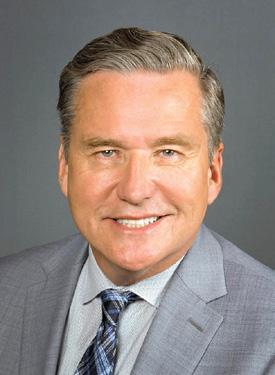
Last week Michelle accompanied me to this year’s Killarney Filipino Community Fiesta celebration. The cultural display and entertainment were amazing to experience. I was told that there are approximately 325 Filipinos living in the Municipality of KillarneyTurtle Mountain, almost 10 percent of the area’s total population of 3,500. Many of the members work in the pork industry, healthcare industry and the hospitality industry.
Much of rural Manitoba is facing a skilled workforce shortage and communities in Turtle Mountain could be growing more quickly if businesses could find
skilled workers.
Once a business attracts a new employee from outside the community, the next challenge is trying to find housing for the family of that new employee. As a solution, some communities are building senior multi-housing projects to free up existing single-family housing for newcomers to the community. Towns such as Boissevain and Killarney have started to build such multi-family properties.
Last year the Canadian Government welcomed, for the first time, over one million immigrates to Canada. Almost half of these new Canadians located to Ontario and majority of the rest moved into major cities such as Montreal, Vancouver, Ottawa, and Calgary. I was in Toronto this summer at a Canadian Parliamentary Association conference and people from the Greater Toronto Area mentioned how much more congested the traffic has become since 2020. They also mentioned how expensive real estate
has become in the GTA. It is so hard for new immigrates moving into these areas to make ends meet.
We have the solution. Come to rural Manitoba! We welcome diversity in our rural population.
How do Manitoba communities let new Canadians know that our rural lifestyles and quality of life are the best in the country, and that they also will not be stuck in rush hour traffic?
We are going to have to work with all levels of government to attract some of these new Canadians to fill the job vacancies here.
We need to promote and to share the many success stories of new Canadians calling rural Manitoba “Home!” Doyle Piwniuk is the MLA for Turtle Mountain. His column will be an ongoing feature in Lifestyles to help promote our knowledge and understanding about the amazing things happening in the part of our province.
Shandy Walls
Stories are often best told when starting from the beginning – but this is not one of them.
The last question I posed to Pineridge Hollow founder and owner, Jan Regehr, was how she would like to be remembered after she is gone.
Her answer was “What I want to be remembered for, I think, is that I helped to heal a part of society, that I moved the needle, that I helped to connect and create a healthy community; and to hold space for lots of diversity of thought and people. That I truly believe that when we work in our strengths together, we are way stronger than our individual parts.”
Part of that healing for Jan is food. She told of trips into town as a young girl with her father when numerous stops were natural so they could get the best produce from one farmer, the best meats from another, and the best dairy and cheeses from yet another.
“I actually believe that food is a part of the healing, and I actually believe the quality of food people are eating is contributing to our mental health crisis.”
Celebrating 33 years in business this year, Pineridge Hollow has evolved into a farm-to-table experience like no other, with most things on her menu being grown on her family’s Oak Knoll Farms. What her farm doesn’t produce, she sources locally.
With her 2022 Pineridge Village expansion, Jan bet on her philosophy of “good food makes good cooks” and she opened The Farmer’s Kitchen, a grocery store that offers seasonal produce, local fare, ready-to-make meal kits and, of course, her famous homemade beet chips that she has been serving for over a decade.
Making the volume of beet chips needed on a weekly basis is a full-time position all by itself, so that requires help. Most business owners would put into place structures, processes and policies as the business expands.

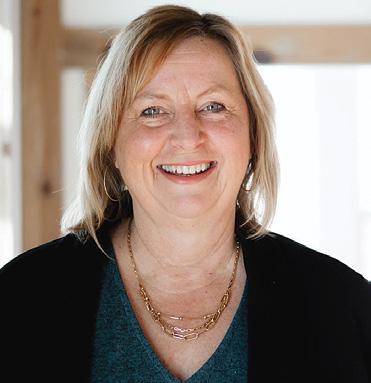

You might be asking yourself, what is the Village? No, it is not a miniature town. It an avenue on “likeminded” businesses “bringing together shopping, dining, workshops, entertainment and exploring the outdoors.” Some of the shopping experiences you will encounter include a jewelry store, fashion, a bakery, farmers market, gift shop, body and skin care . . . and when your retail therapy is complete, you can stroll the garden or have a relaxing meal in the restaurant.
Not to say that Pineridge Hollow doesn’t do that, but they approach this a little differently. They rely on creating a Statement of Purpose, clear and value driven, with the underlying theme of “better together”.
When hiring management, they invest in personality type assessments using tools such as Working Genius (www. workinggenius.com) to ensure that the right people are in the right roles, not only for the success of the business, but for the success and fulfillment of the individual.
Understanding employees’ areas of strength and frustration is important for obvious reasons. Understanding becomes even more personal when the people you love the most – your husband and three adult children – are also a part of the business.
Investing time in assessments, such as the Enneagram, allows for better understanding of each other and allows for each to work within areas of their own strengths and to not always take things personally. (Hint: Jan is an 8 on the Enneagram….www.enneagraminstitute. com)
If you haven’t been to Pineridge Hollow, and you MUST go, you will find yourself driving 10 minutes past the perimeter highway off Highway 59. Just follow your Google Map (which, at one point you may think has given you the wrong directions. It didn’t) and you will find her.
Always a visionary and thinking way ahead of the curve, Jan moved the original site to this isolated location for a reason, despite her only support being her husband and father-in-law, Walter.
She knew that the sense of “being away from it all” was key to achieving her vision to create a place where people could enjoy the experience of dining, of hiking trails, of forest bathing – all those restorative activities that along with good food and shopping, can make for a wonderful experience.
What is next? Phase two of the Village is already in the works for 2026, which will encompass development of more retail space, services and an expanded Furniture Design Centre. You can contact katrina@pineridgehollow. com if you would like more information on how to become a part of the Village. And the cherry on top will be the Pineridge Hollow Inn and Spa. Let me give you a glimpse of Jan’s vision – imagine yourself checked into a lovely, rustic Inn in the middle of a prairie forest, relaxed from your day of work, invigorated by your re-connection to yourself and nature. You are walking to the Village, beverage in hand, along the beautifully groomed trails, off to the shops before a farm-to-table gourmet meal in the restaurant, then relaxing on the porch as the sun sets over the Manitoba horizon.
Yes, Jan, we are all better together. Thank you for moving the needle. To find out more about Pineridge Hollow visit pineridgehollow.com/
It’s the start of the harvest month, the weather is turning a little cooler which can only mean one thing, time for some soup.
What is in a soup that is so comforting? Is it its cradling warmth on a cold day, or the coziness and welcoming of an old friend? Whatever it is, if you haven’t tried this particular soup, it will fast become a comforting pleasure you will want over and over again. There is something magical about this soup with its paprika-tinged and soothing taste, the heartiness of meaty, earthy mushrooms elevated by the herbaceous lightness of dill and the subtle tang of sour cream. Soup on its own can be a full body flavour celebration. If you are a mushroom lover, this soup will become a firm favourite. Deliciously creamy, it makes for a simple weeknight supper—and since it’s vegetarian, it’s especially perfect for meatless Mondays. A bonus, right?


3 cups vegetable stock
½ cup dry white wine
1 tablespoon dried dill
1 tablespoon finely chopped fresh thyme
1 ½ tablespoons paprika
1 tablespoon Lea & Perrins sauce
1 teaspoon salt
½ teaspoon crushed black pepper
3 ½ tablespoons all-purpose flour
Here’s how to ensure it turns out beautifully every time.
Here is what you will need:
5 tablespoons salted butter
1 large yellow onion, roughly chopped 600 grams cremini mushrooms, sliced
1 cup whole milk
½ cup sour cream
1 tablespoon freshly squeezed lemon juice
2 tablespoons fresh Italian parsley
The all important how to:
In a large pot over a medium heat melt the butter.
Once the butter is melted, add onions and mushrooms and cook, stirring occasionally, until onions are soft and translucent.
Add the vegetable stock, white wine, dill, thyme, paprika, Lea & Perrins, salt and pepper. Bring to a boil over high heat, then reduce allowing to simmer, letting all the flavours meld together, stir occasionally.
Whisk the flour into the milk until smooth in a small bowl. Add the mixture to the soup and cook, stirring occasionally, until the soup begins to thicken.
In a small bowl add the lemon juice and sour cream mix together then slowly add until it has all been mixed thoroughly.
For serving, divide the soup into four bowls and top with fresh chopped parsley and a few fried mushrooms. To make it even more yummy slice up some fresh French baguette and butter then toast under the broiler, Viola!
Footnotes for a good soup:
Use good mushrooms. Select mushrooms that look firm and clean not old and wet. Cremini mushrooms for their darker color and super meaty texture are my favourite.
Take your time sautéing the onions and mushrooms—let the heat and butter draw out their natural juices, and then let them get a little bit of color, too, caramelization always means added flavor.
If you want a rich and hearty soup, don’t substitute low-fat dairy for the sour cream and milk. Keep it rich is all it takes to give this soup a decadent texture. Just enjoy!
For the best Hungarian mushroom soup, sweet, mild Hungarian paprika is the classic choice. Did you know, Paprika originated in Hungary, trivia to boot! Ian Leatt is a trained chef from across the pond.



While Winnipeg has produced its share of successful recording artists on both the national and international music charts, there are plenty more local recording artists who have released music that, while not on major record labels, nonetheless caught the attention of local record buyers. The artists who recorded these local gems may have financed the recordings themselves for small independent labels and sold them to a loyal fan base. Let’s take a look at a few of these.
Leon Isenberg
Born in Prince Albert, Saskatchewan, Leon Isenberg began his music career playing accordion in dance bands while still in his early teens. Following World War II, he moved to Winnipeg where, having moved up to the Hammond organ, formed The Leon Quintet performing in clubs and dancehalls across Western Canada. In 1962, Montreal-born trumpet player and vocalist Harry Ellsworth, who had previously worked with Jose Poneira’s band at the Rancho Don Carlos, invited Isenberg to join him for a two-week stint in the Scarlet Lounge in popular West End Winnipeg restaurant Rae & Jerry’s. Two weeks stretched into a 22-year gig. Their lone album was recorded live in the lounge circa 1980 by local producer and drummer Wayne Finucan and features many of the duo’s best loved selections such as Yellow Bird, I’ve Got You Under My Skin and Havah’ nagilah. Incidentally, many of you may recall Leon Isenberg as the owner of American Hi-Fi in downtown Winnipeg.
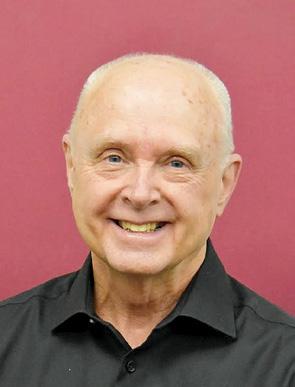
John Einarson Winnipeg City of Song
Harry Douglass and the Deep River Boys Harry Douglass and the Deep River Boys formed in Hampton, Virginia in 1937. They performed on radio in

New York during the war and scored a hit in 1948 with the song Recess In Heaven. As a popular night club act the group toured the world, often in the company of dancer Bill “Bojangles” Robinson. They first appeared in Winnipeg in 1946 and over the years became regulars at Winnipeg clubs including the Rancho Don Carlos on Pembina Highway. By the time this live recording was made at the International Inn hotel (now the Victoria Inn) in the latter ‘70s, Harry was the only original member. Besides musical talent and showmanship, the group was also noted for its humanitarian work performing at hospitals, seniors’ residences, schools, and, as the liner notes point out “reform institutions and retardation centres.” Accompanying the Deep River Boys for this energetic live set are two of Winnipeg’s finest musicians, Reg Kelln on drums and bass player Ron Halldorson.
The La Rosa Trio +1
Having cornered the Ukrainian music market, local V-Records, owned and operated by Alex Groshak from his Windsor Park home, sought to tap into the thriving ethnic Italian community in the latter 60s by signing The La Rosa Trio +1 (Carmine LaRosa, Gary Rogers, Mike Sambork and Ted Hicks). Singer Carmine LaRosa was well-known in the local music community having previously fronted the Thunderstorms. “We were more versatile than just a rock ‘n’ roll band,” says La Rosa. “I sang the Italian songs like Volare and we did Trini Lopez songs and country and western. We also played weddings and socials for the Italian community.” The trio’s second album, A PartyItalian Style, in 1966 featured the band covering well-
Continued from page 1
that spans painting, stone carving, clay sculpture, photography, ceramics, and more. This is your chance to see these artists in their own creative spaces, where you can chat with them about their processes, inspirations, and the stories behind their pieces.
The tour not only highlights the exceptional talent within our community but also gives a wonderful opportunity for visitors to explore their own artistic side. You might find yourself inspired to try a new art form or delve deeper into a creative hobby. For those in search of a special gift or the
perfect addition to your home decor, this event is a treasure trove of artistic options. Each studio promises to be a unique experience, offering insight into the diverse techniques and styles that make each artist's work distinctive.
Planning your visit is easy. Simply mark your calendar for September 2122 from 10 am to 4 pm and set aside time to explore each studio. Gather your family and friends and make a day or even a weekend out of it!
To help you navigate the tour, pick up one of our Harte Trail Studio Art Tour brochures. These brochures are
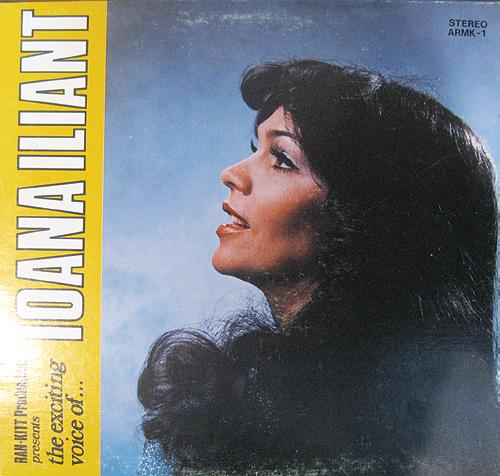
known Italian songs such as That’s Amore along with English hits like It’s Now or Never and Sway. The front cover boasts a photo of the group (left to right: LaRosa, Sambork, Rogers) seated alongside two local fashion models at Chan’s Moon Room on Main Street.
Ioana Iliant
Romanian-born singer Ioana Iliant began her career in Eastern Europe, winning a major singing competition in Turkey in 1973 before coming to Canada to appear in nightclubs. Fluent in multiple languages, she performed at several Winnipeg clubs and earned praise from the likes of Winnipeg Tribune entertainment writer Gene Telpner who declared “Ioana Iliant displays on stage a great deal of vitality that captures the audience.” Bandleader Jimmy King noted, “Miss Iliant is a treat to listen to. Her rich voice, grace, style and ease indicate a considerable amount of stage experience and she is an accomplished musician.” In 1977, Iliant recorded her one and only album at Wayne Finucan’s Fort Garry home studio with managers Ann Randall and Michael Kittner producing for their own Ran-Kitt record label. Dave Jandrisch wrote the musical arrangements while musician and songwriter Graham Shaw was hired to provide English language lyrics for many of the songs. “She would tell me the stories of the songs and I would have to write some English words that conveyed that story,” Shaw recalls. “Then she would sing the lyrics phonetically.”
Iliant had a powerful voice well served by Jandrisch’s impressive orchestral arrangements. She performed across Western Canada with a backing band consisting of Winnipeg musicians including brothers Tony and Ken Biegun and Allan Duma as well as with the Wally Meyers Trio. Little is known about her since the latter ‘70s although a lone posting on the internet indicates she passed away in 1990.
available at various locations throughout the city, or you can visit our website to download a printable version. The brochure includes a detailed map and highlights each of our 20 talented artists. With so many unique creative spaces to explore, you’ll want to make sure you visit them all!
Don’t forget to subscribe to the Harte Trail Art Tour Newsletter and be the first to receive the most up-to-date tour info.
Artist info, FAQ’s and additional Tour Info can also be found at our website at https://www.hartetrailstudiotour.net/
Home is Where the hARTe
Continued from page 1
ticulous preparation and dedication have been instrumental in elevating the orchestra's performances. “Coordination is both musically and visually important, as is trying to prepare the parts to best reflect the musical interpretations of the conductor and composer before the first rehearsal,” she notes.
Gwen’s accomplishments as Concertmaster are remarkable. She has performed all the major violin concerti, premiered numerous works, and earned accolades for her interpretations of both classic and contemporary compositions. Her contributions to new music, through Canadian premieres of violin concertos by composers like Christopher Rouse and Philip Glass, have solidified her reputation as one of Canada’s finest violinists.
Daniel Raiskin, WSO Music Director, shared his admiration for Gwen's contri-

butions. “I am writing these lines with lots of mixed feelings… An immense sense of gratitude on the one hand and sadness on the other! Gwen Hoebig is entering her final season as Concertmaster, having helped to shape the orchestra’s unmistakable sound and artistic identity in the most profound way. She is a steadfast guarantee of the highest performance standards, work ethics, and a true commitment to the unique place the WSO occupies in our community."
Raiskin continued, "From my very first encounter with Gwen, I have been blessed by a partnership that is really one of a kind: it helps me to channel my musical ideas to the entire orchestra and at the same time makes me a better musician, keeps me concentrated and aware, helps me to articulate my suggestions, direct energy, and feel supported. I will be missing that… I look
very much forward to celebrating Gwen’s remarkable and illustrious WSO legacy during our 2024-25!”
Reflecting on her time with the orchestra, Gwen shared, “Highlights have been too many to list! Generally, my favourite piece of music is the next one I’m playing. I love the Classics, the explorative nature of the New Music Festival, and often the fun associated with the other series that the orchestra plays.”
Gwen’s passion for music is matched by her affection for her colleagues. “I think my favourite aspect of being a member of the WSO is my colleagues! We support each other through the ups and downs of life.” Outside of music, Gwen enjoys hobbies like sewing and reading. Her involvement in the orchestra’s “baking club” and first violin section lunches underscores the close-knit community she has been a part
of for so many years.
To celebrate her incredible career as Concertmaster and her invaluable contributions to the Winnipeg Symphony Orchestra, Gwen Hoebig will perform with her family and the WSO in a special concert on May 10 and 11, 2025.
To honour Gwen’s profound impact on the WSO, a Concertmaster Endowed Chair will be established within the Winnipeg Symphony Orchestra’s Endowment Fund at The Winnipeg Foundation, thanks to the generosity of an anonymous donor. To contribute, please contact the Development Department at 204-949-3979 or email thuscroft@wso.mb.ca. Contributions made before November 30, 2024, will be partially matched by the Canadian Heritage Endowment Incentives Program. Tickets for Gwen’s final concert are now on sale.
In person, I can attest to the fact that Brian Barkley is every bit as warm and friendly in real life as he appeared to be on air in his more than 30 years as CJOB’s traffic reporter.
I had the pleasure of interviewing Brian for the first time about 10 years ago, shortly after he walked away from a 39-year career in radio. I recently caught up with him again and learned more about his time as a broadcaster and what he has been doing since. It shouldn’t come as a surprise that the answer to the that question involves driving.
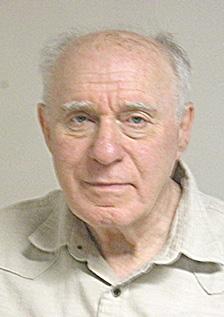
Brian got into the radio business at a time before there were communications courses. When he started in the business almost 50 years ago, the route to a career on radio or television was still through hands-on experience. He was just a kid growing up in Portage la Prairie who loved listening to the personalities on CFRY, Portage’s local radio station.
“I felt like I knew them personally,” he recalls. “I thought that I would like to do that – be on radio. CFRY had a training program for young adults who wanted to get into the business. So I auditioned right after high school (in 1970) for Vic Edwards, CFRY’s program manager.”
He notes that Edwards went on to have a career in radio in Winnipeg.
Brian’s first gig was spinning Country and Western disks. He recalled that he didn’t know much about Country and Western music at the beginning but came to enjoy it.
To realize his goal of becoming a broadcaster, he says that he watched what the veteran broadcasters on CFRY did and modelled himself after them.
After a couple of years on CFRY, Brian and his bride, Brendene, relocated briefly to Altona where Brian had been offered a job on air with radio station CFAN and Brendene secured a teaching position.
Brendene, he recounts, is originally from Arkansas. The couple met when she was sent to Portage by a Baptist student program to spend the summer working with a youth group in Brian’s home town. Brendene and Brian recently celebrated their 50th anniversary.
After a year in Altona, realizing that the southern Manitoba community wasn’t for them, Brendene got a job teaching in Winnipeg and Brian soon after landed his dream job on CJOB.
That was in 1976.
“I was originally hired to read the news on the FM station,” he recalls. “I really learned to appreciate working for CJOB.”
Over the next 15 years, Brian’s role expanded to become reporter, news writer and broadcaster.
Brian’s transition to traffic guy came about in 1990. Laurie Mustard was hosting the morning show at the time,” Brian says. “For the daily traffic reports, people would call in. Someone got the idea that it might be better to have a dedicated reporter actually out there on the street. I was asked if I would like to take on the assignment driving the new CJOB traffic cruiser.”
Brian took on his new role with gusto. Right from the beginning, he recounts, he started making connections with people in the know at Winnipeg Transit and the Winnipeg Police Service traffic division.
The dedicated traffic reporter generally started in his daily rounds at around 5:30 or 6:00 in the morning. He would come home about 11:00 for about four or five hours then head out again for the afternoon rush hour. While on duty, he would be phoning in his reports to CJOB as many as six times an hour and twice a day to CJOB sister station, Power 97, alerting listeners to traffic bottlenecks due to road work, stalled cars, or accidents.
“I would travel different routes as well as follow up on tips from listeners,” he recounts. “By the time I retired, I was getting as many as 100 calls a day.”
But Brian did more than drive. He became co-host with Roger Currie on CJOB’s weekday morning show – exchanging repartee with his partner. He began taking celebrity guest with him, engaging them in conversation. For some years, he even took his dog, Badger, with him.
“Badger was my traffic dog for almost five years before he passed away,” Brian recollects. “Badger became a celebrity in his own right. When we would go on location, more people would come to see Badger than to see me.”
Among the other morning show hosts he worked with, were the recently departed Larry Updike, Hal Anderson, Brett Megary and Greg Mackling.
“I still see Hal and Roger from time to time,” he says.
After retirement, the first thing Brian and Brendene did was drive down to Arkansas and North Carolina to visit her sisters.
During Covid, he reports, the former traffic reporter once more got behind the wheel of his car and he and Brendene set out to explore Manitoba. “We did 60 road trips,” he says. “Most were day trips. We would be out for up to 16 hours a day. There is so much to see in Manitoba.”
Among the highlights were the Pinawa Dam, an historic Buffalo drop in the southwestern part of the province, the Moncur Museum in Boissevain, the Pembina Valley and nearby Peace Gardens and the world’s largest conglomeration of crocuses near the town of Arden in southeastern Manitoba.
Their most ambitious trip was a five-day visit to the Flin Flon area. “We stayed at a fishing lodge up there,” Brian recalls. “Our daughter caught a beautiful jackfish. We also stopped at the Duck Mountains on the way back.
“Everywhere we went, people were so friendly and accommodating.”
The Barkleys have also have taken the grandkids on annual week long or more trips to both the Canada and US. Niagara Falls. “Last year, we took them to Yellowstone National Park ,” he says. “We’ve done 10 of these trips.”
Closer to home, Brian notes that he works out at the gym three or four times a week and he and Brendene enjoy movies and concerts.
He and Brendene also organize their own concerts in their home. “We’ve hosted 25 house concerts in my retirement years,” he says. “We invite artists we’ve seen at various venues such as WECC or Park Theatre and invite them to a Barkley House Concert. We get 30plus people to see full-length, two-hour shows. And the adventures continue. At the end of July, the Barkley family – including daughter and grandson – are driving down to Jonesboro in Arkansas, 60 miles from Memphis. The tour was scheduled to include some lovely parks, historic sites and, of course, Graceland. Come the fall, the Barkley Family will be heading back to the south – this time with son and daughter and two grandchildren as well as Brian’s brother and sister-in-law. The destination is the Great Smoky Mountains.
And you can no doubt count are more adventures to come.

66% of Canadian families haven’t discussed their final wishes*

Choosing funeral and cemetery plans can be overwhelming to a grieving spouse. Plan the details now. Together. Order your FREE Estate Planning Kit by calling or visiting the locations listed below.
Chapel Lawn Funeral Home & Cemetery 4000 Portage Ave., Winnipeg, MB 204-982-8100

Glen Lawn Funeral Home & Cemetery 455 Lagimodiere Blvd., Winnipeg, MB 204-982-7557
Glen Eden Funeral Home & Cemetery 4477 Main St., West St. Paul, MB 204-982-8300
Desjardins Funeral Home 357 Des Meurons St., Winnipeg, MB 204-233-4949

*Research conducted by Willful and Arbor Memorial Inc. in a 2020 survey.


Every day I continue to be honoured and grateful to serve in the position of Minister for Health, Seniors, and Long-Term Care. In both my role as Minister and Deputy Premier, I have had the opportunity to meet with a wide range of Manitobans, who live in every corner of our province. And during every visit I make, whether to a health care facility, a community hall, a festival, or a public event, I am always humbled to be in the company of so many hardworking, caring, and active Manitoba seniors.
Manitoba’s seniors are the backbone of our communities. They are healthcare workers, volunteers, community leaders, organizers, and so much more. It’s been a priority for our government, since being elected ten months ago, to ensure our province becomes more accessible and supportive to our seniors. We have announced a new personal care home in Lac du Bonnet, the establishment of a Seniors’ Advocate Office, and are reopening services of the previously shuttered Mature Women’s Clinic.
the basic activities of daily living.
This $22-million investment will allow eligible seniors (those with a combined household income of $60,000 or less) to apply for funding of up to $6,500 to help with home adaptations. This program will help Manitoba seniors make their homes safer by offering financial support to install grab bars and safety rails, widen doorways, or install modular ramps. We know that Manitoba seniors want to stay, not just in their homes, but in their communities, where they make a difference daily. They deserve a home that they can live in safely and with dignity.

Hon. Uzoma Asagwara Minister's Message
In April, our government partnered with March of Dimes Canada to launch the Safe and Healthy Home for Seniors program. We know many seniors want to stay in their homes – and aging in place successfully requires a person to have a safe and accessible home that meets their needs. And cost should not limit a person’s ability to complete
Further information can be found online at: Manitoba Safe and Healthy Home for Seniors | March of Dimes Canada. The information is also available by emailing the program at SHHS@marchofdimes.ca or by calling 1-866-906-6006.
The transition from summer to fall brings with it many things. On one hand, communities come together again after summer vacations have wrapped – and we begin a season of fundraisers and community events. And on the other it can be a time of stress and worry for many Manitobans –as we know we’re on the brink of flu season.
When I took on the role of Health Minister last year, I was shocked at how little preparation had been made for the most predictable health issue our province faces every year, and immediately began
“Worry is like a rocking chair: it gives you something to do but never gets you anywhere.”
– Erma Bombeck
Alfred E. Newman is the familiar, frecklefaced, fictitious character that emblazoned almost all of the 550 issues of MAD Magazine before its demise in 2018. “What, me worry?” was his motto. He first appeared in 1954 shortly before I remember actually worrying.
I overheard my mother telling someone I had a nervous stomach. Up until that moment I had no idea there was anything wrong with me. Somehow it went away, whatever that was, if I even had it. Still, it was enough to cause me to worry. Then a couple of years later I was in the hospital for a week because my mother thought I might have rheumatic fever. Now I had something else to worry about. It turned out I had growing pains. Now that I think about it, perhaps my mother was my biggest pain. The pains went away and then, so did the worry. At least for about four years.
us but for our children as well. And that’s another worry, children. I have often said, “The only thing that changes as our children get older are the worries.”
In recent times of course, COVID-19 was a big worry for most of us. It seems to have subsided somewhat but it never really went away and recently I heard it’s making a comeback. Don’t worry about it. We have vaccines. If you have to worry, worry about the people who refuse to get the needle because they think it’s all a conspiracy. Or, if you’re all out of worries, maybe worry about Mpox (formerly known as Monkey Pox) now considered a global health threat. Again, there are vaccines being stockpiled just in case it appears in this country.
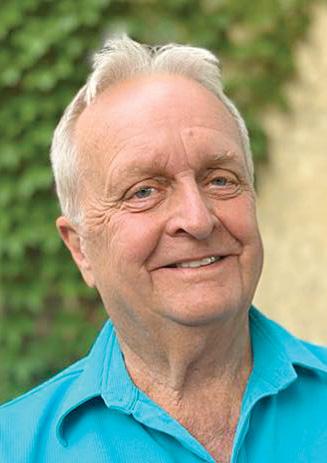
I was around eleven when I heard my mother having a conversation about her time working at the Ninette Sanatorium where they treated people infected with tuberculosis. Well, wouldn’t you know it … even though she worked there long before I was born, I wondered if maybe some of those germs had rubbed onto me. Thankfully, I made a full recovery. It was a miracle.
Then, in 1962, along came the Cuban Crisis. Do you remember the testing of air raid sirens? If you do, you’ll also remember practising taking cover under our desks at school. I wonder whose idea that was? I don’t know about you but, it was enough to make me worry.
There were a ton of worries we all had during our adolescent years and then came the real worries of adulthood. There is a long litany of worries we endured. I’ll list a few but, only a few as I don’t want you to get worked up in a tizzy.
Financial and job security top the list. There’s world politics, family, health and aging are especially worrisome as the pages of the calendar fly by. There are millions of us who worry if there will still be enough funds in CPP and OAS not just for

preparing for the 24/25 flu season. We know that seniors are at higher risk of complications from influenza. That’s why I’m reminding all Manitobans over 65 that they are eligible for the high-dose influenza vaccine. This vaccine is free of charge, and I encourage getting the dose before flu season is in full swing.
We also know that COVID-19 remains a threat, especially to Manitoba seniors. Which is why all Manitobans over 65, when receiving their flu shot, are also eligible to receive their updated COVID-19 vaccine at the same time.
I also want to remind folks to check with their health another dose of Pneu-C-20 – the updated pneumococcal vaccine that protects against 20 different strains of the pneumococcal bacteria. You are eligible for this vaccine if you have not received any other form of pneumococcal vaccine since turning 65. Your health care provider can help you determine whether the new dose should be administered. Please contact your primary care provider, walkin clinic, Access Centre, Connected Care Clinic, pharmacy, or local public health office to inquire about current availability of free flu, COVID-19, and pneumococcal vaccines. For more information about Manitoba’s immunization program and eligibility requirements for vaccines visit Vaccine Eligibility | Health | Province of Manitoba (gov.mb.ca).
Again, it is my great honour to serve as your Minister of Health, Seniors, and Long-Term Care. I wish you all a safe and healthy Fall.
The Hon. Uzoma Asagwara is the Minister of Health, Seniors and Long-term Care.
Mark Twain who was quoted as saying, "I am an old man, and I have suffered a great many catastrophes in my life but, most of them never happened."
In other words, don’t be a worry wart. Easier said than done I know but, here are just a few things you can do to move forward and leave your worries behind.
• Stop and think about how important a particular worry really is in your life. Even small worries can become overwhelming if we spend too much time thinking about them.
• Talk to friends or family about what is bothering you. Sharing your feelings can actually make you feel better and belay your worries, or some of them.
• Keep busy. Sitting around moping all day isn’t going to solve anything. Do something active, read, get involved with a hobby or some activity that is useful or productive.
• Take care of all aspects of your health.
• Try to maintain friendships with people who are positive and generally happy.
• If excessive worrying is affecting your daily life, getting professional help might be the answer.
Don’t make a mountain out of a mole hill or as my mother-in-law will often say, “Don’t meet your troubles halfway.” Remember: Worry is interest paid in advance for a debt you may never owe.
Worrying excessively is mentally draining and often unproductive but generally, psychologists suggest, some worrying is good. It can make us stop and think the problem through and come up

A postcard from the early 1900s with the public domain "me worry?" face that was to go on to inspire Mad magazine's Alfred E. Neuman character.
with a positive solution.
If that doesn’t work, perhaps one of the following might. I recently discovered there are small handheld objects called worry frogs, worry worms and worry slugs. I assume that holding one of the objects in your hand and rubbing them will alleviate any worry troubling you. I find it curious that any one of those things would be considered unpleasant and even worrisome to hold in your hand. There is also the basic worry stone which might provide the same form of relief. You can collect them and store them in a worry jar for safe keeping.
In the inimitable words of George Carlin: Don’t sweat the petty stuff and don’t pet the sweaty stuff. Oh, in 1962 only three countries had nuclear weapons totaling about 2,600. Currently there are nine countries with just over 12,000 warheads. Do you have a desk you can hide under? Don’t worry; have a nice day.
Listen to Jim’s podcasts on Lifestyles 55 Digital Radio. Find Radio Redux, and Mid-Century Memories at www.whatsupwinnipeg.ca/lifestyles-55digital-radio/
Diversity, Equity, and Inclusion (DEI) initiatives have become central to corporate strategies aimed at fostering more inclusive and equitable environments. As these programs gain momentum, questions arise about their effectiveness and potential drawbacks. While the intentions behind DEI initiatives are commendable, they often come with significant financial costs, resource implications, and risks to corporate reputations that warrant closer scrutiny.
A common criticism of DEI efforts is their tendency to be more symbolic than substantive, often serving as performative gestures rather than catalysts for real change. Companies and institutions may allocate substantial budgets to DEI programs, sometimes amounting to millions of dollars annually, yet fail to enact meaningful transformations. This superficial commitment can lead to tokenism, where individuals from minority backgrounds are hired or promoted to meet diversity quotas without being recognized for their skills and qualifications. Such practices not only fail to achieve true inclusivity but also represent a significant waste of resources on initiatives that do not deliver on their promises. This approach is tantamount to virtue signaling, which for many companies, particularly those acquiescing to public pressure from ideological NGOs, seems to be sufficient. Moreover, the illusion of progress created by these efforts can lead to cynicism among employees and the public, as they recognize that these initiatives often fail to address the root causes of inequality. For instance, while increasing diversity numbers through targeted hiring practices might look impressive on paper, if the organizational culture remains unchanged, these new hires may still face discrimination or exclusion, resulting in high turnover rates and further financial costs.
Rule, or the ethic of reciprocity.
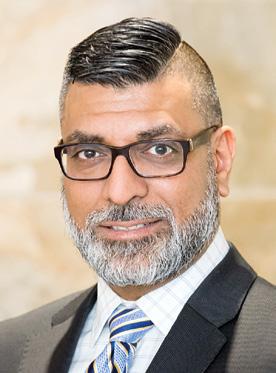
Romel Dhalla On The Money
Another significant concern is the potential conflict between DEI initiatives and the principle of meritocracy, which is crucial for fostering a high-performance culture. In merit-based systems, individuals are rewarded based on their abilities and contributions, driving innovation and success. However, when DEI policies prioritize identity-based considerations – such as race, gender, or ethnicity – over merit, they risk undermining these core values. For instance, recent controversies at companies such as Google in 2022 highlighted employee frustrations over promotions being influenced by diversity targets rather than merit, leading to a decline in morale and trust in the organization’s processes. This is supported by a 2021 Boston Consulting Group study, which found that meritocratic cultures outperform their peers by up to 19% in revenue growth. The perception that merit is sidelined can also result in significant disengagement, with Gallup estimating that disengaged employees cost the U.S. economy around $500 billion annually in lost productivity. While the pursuit of DEI goals is wellintentioned, companies must recognize that the ideals of true diversity, equity, and inclusion are challenging to fully achieve in practice, especially without compromising the principles of meritocracy. Striking a careful balance is essential to maintain organizational integrity and performance.
of masculinity. While the campaign was intended to align with social justice movements, it faced significant backlash from segments of the public who felt it unfairly targeted men. The campaign was seen by some as virtue signaling and led to boycotts, negative press, and a reported $8 billion write-down on Procter & Gamble's Gillette brand, according to Business Insider.
Similarly, in 2021, Victoria’s Secret attempted to rebrand itself by moving away from its “Angels” image to embrace a more inclusive and diverse representation of women. However, the rebranding was met with mixed reactions, with critics arguing that the move was insincere and alienated the brand’s core audience. According to The Wall Street Journal, this rebranding led to a decline in sales and raised questions about the company’s future direction. These examples highlight the risks of integrating DEI into marketing without a thorough understanding of the audience and the potential for unintended consequences. The financial fallout from these campaigns, including loss of revenue, legal fees, and the cost of damage control, underscores the need to consider applying DEI principles to market-facing initiatives in the first place.
One of the most complex and controversial components of DEI is the concept of "equity." Unlike equality, which focuses on providing equal opportunities, equity involves ensuring that outcomes are adjusted to account for differences in individual circumstances. While the idea of equity is well-intentioned, it can lead to a logical fallacy when applied in large organizations. The challenge lies in the practical implementation of equity – how can organizations fairly and consistently ensure equitable outcomes for everyone? Moreover, there is the issue of subjectivity: what happens when different groups within an organization claim to be more oppressed than others? This can create an endless cycle where the criteria for equity become increasingly difficult to define and implement, leading to internal conflicts and strained resources. The point is that it is impossible to cater to every individual’s specific identity to a point of complete satisfaction – and it must be complete because you cannot partially respect someone’s identity if you are going to respect it at all.
Organizations must grapple with where to draw the line, as constantly shifting equity goals can undermine the stability and predictability needed for the long-term success of their employees. Perhaps the only actual equitable thing to do is to not recognize or cater to anyone’s individuality or identity in the first place and instead go back to tried and true methods like the Golden
Rather than fostering unity, DEI initiatives can sometimes exacerbate polarization and division within organizations. When these programs emphasize differences over shared goals, they can inadvertently create an "us vs. them" mentality. This divisive approach has been observed in companies like Netflix, where internal disputes over the company's handling of controversial content, a Dave Chappelle Comedy Special related to race and gender, sparked widely reported employee walkouts and protests in 2021. These events highlighted the challenges of balancing DEI initiatives with other corporate priorities, leading to internal divisions and a decline in workplace cohesion.
Similarly, in 2022, Disney faced significant backlash over its public response to Florida's "Don't Say Gay" bill, leading to internal conflicts and public criticism. The company’s delayed stance on the issue angered both employees and external stakeholders, resulting in a loss of trust and significant reputational damage. These incidents illustrate how poorly managed DEI strategies can lead to considerable financial and operational costs, including legal fees, public relations crises, and decreased employee morale, sometimes amounting to millions of dollars. In both cases, having a DEI policy in the first place led to what was a nowin, fail-all-sides, scenario.
The concept of equity has also had repercussions in market and product initiatives, particularly when DEI-based strategies are poorly executed. Several high-profile ad campaigns driven by DEI principles have backfired, resulting in damaging sales declines and tarnished corporate reputations. For instance, in 2019, Gillette launched its "The Best Men Can Be" campaign, which aimed to address toxic masculinity and promote a more inclusive definition
Lastly, many DEI initiatives lack clear, measurable outcomes, making it difficult to assess their effectiveness. Without concrete goals and metrics, organizations may continue to allocate resources to DEI efforts without any real impact on the issues they aim to address. This lack of accountability can lead to a misallocation of resources that could be better spent on initiatives with tangible benefits. For example, companies may invest in diversity training programs without measuring their impact on employee behavior or organizational culture. If these programs fail to bring about meaningful change, the financial investment is essentially a sunk cost with no return on investment.
While DEI initiatives are often well-intentioned, they inherently struggle to reconcile with the principles of meritocracy and can lead to significant financial, operational, HR, and reputational challenges. The idea that DEI can be meaningfully implemented in a way that fully achieves true diversity, equity, and inclusion is simply unattainable, akin to opening Pandora’s Box. Instead of pursuing an ideal that may never be fully realized, organizations should focus on fostering a merit-based culture grounded in the ethic of reciprocity, rewarding individual contributions and promoting innovation and excellence while emphasizing equality and mutual respect. By recognizing the limitations of DEI and carefully evaluating its impact, companies can avoid the pitfalls of superficial commitments and virtue signaling, thereby preserving organizational integrity and ensuring long-term success without incurring unnecessary costs or wasting valuable resources.
Romel Dhalla, is President of Dhalla Advisory Corp., provides strategic corporate finance advice to companies and high net worth individuals and was a portfolio manager and investment advisor with two major Canadian banks for 17 years. Contact him at romel@dacorp.ca. Any views or opinions represented in this article are personal and belong solely to the author and do not represent those of people, institutions or organizations that the owner may or may not be associated with in professional or personal capacity, unless explicitly stated. Any views or opinions are not intended to malign any religion, ethnic group, club, organization, company, or individual.
While climate change is creating havoc with our lives and corrective measures seem impossible, seniors are escalating what they can do to create a sustainable future.
Seniors for Climate Mb. is holding a Climate Action EXPO to share information on how to reduce our energy use and impact on the environment. They are encouraging seniors to act now and support local groups on Tues. Oct 1, between 11 a.m. and 2 p.m. on the patio at The Forks.
October First is National Seniors Day in Canada. Seniors for Climate, a group of environmental organizations, is planning a Day of Action across Canada. Events planned in over 50 communities across the country will focus on personal and political action seniors are taking. Practical solutions to the climate crisis will be provided, so participants can decide how they will help.
The focus of the event in Winnipeg is
on seniors meeting with others engaged in climate action. The objectives for the event are to resource seniors to take climate action, encourage and motivate seniors to engage, and to support local environment organizations.
“We know seniors are concerned about the environment and climate impact on the future. So, we’re organizing to do something about it, “ according to Pat Wally, coordinator of Seniors for Climate Mb.
“We can make a difference in what is happening environmentally. We can’t be passive. Our collective future depends on what we do. Future generations will benefit from what we do now,” adds Pat.
Jim Lapp, one of the organizers commented, “There is so much we can do. Information is a starting point to get us going. We can act individually and together to reduce our carbon pollution. We can also help each other adapt to climate change in many ways such as pro-

viding air conditioning to low-income seniors.
“Obviously we’re not going to stop the destruction caused by major carbon pollution by only doing our individual actions. We must do more. We must demand that our society take on more serious climate action. Ultimately we need to collaborate with each other to get our governments to actually act to reduce our carbon pollution and help
us prepare for more serious weather events brought on by climate change,“ he added.
Organizer of the event is Seniors for Climate Manitoba, an informal group concerned about the state of our environment. They are partnering with the Climate Action Team, a local NGO which includes;
• Green Action Centre,
• Canadian Parks & Wilderness Society - Manitoba Branch,
• Climate Change Connection,
• Manitoba Energy Justice Coalition,
• Canadian Centre for Policy Alternatives - Manitoba office.
“We want to encourage more seniors to get involved. Everyone is welcome,” says Pat.
Local contacts for more information are Consider Climate Manitoba, https://www. considerclimatemb.ca/events/ . Seniors for Climate Mb, Jim Lapp 204 226 8726. Pat Wally patw@seniorsforclimate.org/

For the last 10 years, the Town of The Pas has joined millions of people across the country in celebrating Culture Days. At the end of each September, thousands of free participatory arts and culture events both in-person and online are taking place nationally. These events invite the public to get hands-on and behind-the-scenes to highlight the importance of arts and culture. These events connect community members in smaller rural communities and allow us a deep sense of belonging to the arts community on the national scale.
For 15 years this celebration has been taking place and each year it gains more traction and allows us to expand the offering of what is being showcased locally in The Pas. To create such festivities the town relies on the backing of The Pas Arts Council and the work of many volunteers who work tirelessly to create new concepts for the local public. Some of our most beloved events include a community concert with local talent, including our Red River Metis Fiddlers; an Art Walk showcasing a collection of 30 works of art from 20 artists, all blown up to a large scale and hung in the windows of our local business; the Food of The World event showcases local cuisine from our region, as well as numerous other countries for which we have local representation. Culture Days is an opportunity to showcase art, but also a way in which our community comes together to unite under this celebration. Businesses and other organizations work hand in hand to make these events free and accessible to the public.
the success of Québec’s Journées de la culture weekend. It was very important to us from the beginning that this was a project that was equally for the French and English communities. To achieve this I worked closely with Sylvian Lanthier, who was my co chair.”

Since its inception Culture Days has generated enthusiastic interest, participation, and support from a growing network of artists, organizations, municipalities, media, and both the private and public sector across Canada. “The project jumpstarted out of Winnipeg and out of the North and that set the tone for the company. It grew so quickly that we needed to find a project manager,” said Jean. “The first year, Winnipeg was in the top of its category and Flin Flon was the top in its category nationally. People were looking to us for how to make this a success. Gail Asper and the Asper foundation became the very first foundation to come on board. Manitoba led the charge in developing this project and established the gold standard.”
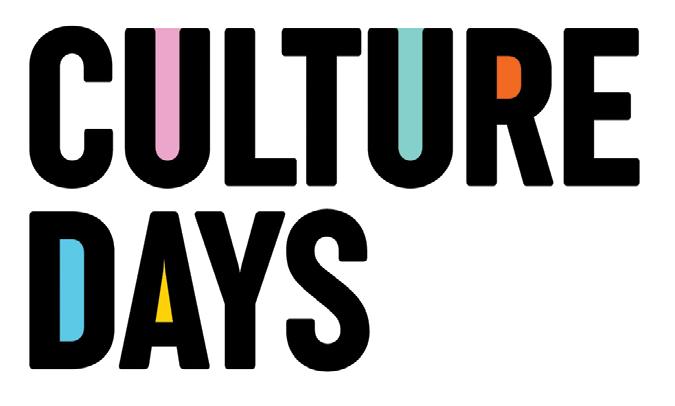
Culture Days are coming September 20th to October 13. This will be it's 15th year of celebrating arts and culture!
I spoke with Jean Giguere, a member of the original steering committee, who was there in Banff when the Culture Days concept came to life. “The Canadian Arts Summit is where this idea came from,” Jean tells me. “We were all in Banff and we were planning programs that would be beneficial for the organization, but we wanted a concept that would showcase the grass roots efforts. Culture Days was inspired by
Cheryl Antonio, who is The Pas and Region Champion for Imaginorthern (www.imaginorthern.ca) tells me about how she became involved in the celebrations in The Pas 10 years ago. “I heard about Culture Days through my membership and volunteer work with The Pas Arts Council. The first year I participated in Culture Days, I helped with the Arts Council’s Family Fun event. It was very well attended and was a joy to be part of. At that time, we offered a variety of crafts to make as well as some live entertainment and refreshments.”
During the first year of Culture Days in The Pas, there were only two local events. “Living remotely, in a rural community, sometimes has its challenges, especially in the food and arts sector. Having an opportunity to shine and to share within our own Tri-Area [The Pas, OCN and The RM of Kelsey] is special, but to be part of a nation-wide event is exciting! For our
artists and foodies it’s an amazing opportunity to get their work out there. For us, it’s a great way to get The Pas on the map and to be noticed in a way we don’t often get credit for, as an arts and foods community!” Cheryl is proud of the growth of the project, which now boasts upwards of 40 events. “Celebrating food and arts through culture is the most incredible and positive way to bring people together. The world will become more sustainable as we move forward with even the smallest of community events. I am very honored to be a team member for The Pas Arts Council and am so proud of all the fantastic steps the Culture Days committee has taken over the years towards providing these community oriented events,” she shares.
We are excited to be kicking off our Culture Days celebration in The Pas on September 27th with the Sam Waller Museum. Starting at 7 PM there will be a Ghost Story Walk led by the museum’s curator along the historic La Rose Avenue downtown, which will end at the museum where a spooky film will be played. This year Culture Days is celebrated nationally from September 20th until October 13th. In The Pas we will celebrate from September 27th until October 6th. For those who wish to join us in The Pas for Culture Days or for those who wish to check out local events planned near you, go to CultureDays.ca where you can find a comprehensive guide to all the events taking place.
During the middle 1950s, the Mandeville-Street-near-Ness tennis courts were surrounded by two small forests. Rumours spread that the site would be ideal for a muchneeded junior high school. Neighbourhood opposition killed the plan. If the school had been built on this site, a few feet from my childhood home, my legendary lateness for school may never had happened.
(Source: Tales of a Trustee by Anita Scmidt).
Deer Lodge Junior High was constructed in 1957 with an addition in 1960. A site was chosen at the southwest corner of Ness and Albany. Five houses on the west side of Albany Street were demolished to make way for the school. Homes at 344 and 348 Albany received a temporary reprieve. These homes remained in use, surrounded on two sides by the school. In retrospect, I believe that the mid 1960s demolition of 344 and 348 Albany was unnecessary. Be-

tween 1956-1966, Ron Thompson was the Superintendent of St. James School Division. Ron had spent part of his adolescence living at 374 Sackville Street. During Ron's speech at the 1966 Deer Lodge closing exercises, Ron gave an interesting history of the neighbourhood, including the challenges of fitting the school around Truro Creek.
Principals, Vice Principals, and Teachers


The first Principal was Ron Macintosh. George Colton, Ruby Douglas, Roseanne Keyes, and Ted Witowski were among the original teachers The 1963-64 Year Book was dedicated to a retiring teacher and Deer Lodge's first vice principal, Annie Wiechman. Hugh Ritchie taught mentally handicapped children. Hugh served as president of the Manitoba Council for Exceptional Students. In 1963, Merv Farough, an art teacher directed a drama club play called the School Daze. Merv played an important role in developing the St. James Assiniboia School Division Media Center. As vice principal, John Pemberton chaperoned Friday night dances. Gordon Huber is best remembered for teaching many students how to drive in the driver education program. Ron Lovering helped produce the year books as a student in the 1960s and as a teacher in the 1970s.
School Happenings and Accomplishments
In 1959, Wayne Pullan a Deer Lodge student, was the grand winner of the St. James Lions- St. James Family Y Rodeo. Wayne won a bicycle. In 1961, Doug McDuff another student was the individual winner in the Junior High section of the two-mile St. James road race.
In 1964, a rally was held to honour retiring custodian William Meaden. Bruce Tallman, Brenda Cleverly, Dale Turner, Hugh Burton, and Wayne Critchley performed leading roles in the rally. In the 1964 yearbook, Ernie Friesen who succeeded William is quoted: “It is great to see a lot of familiar faces of both students and teachers.”
Shortly after graduating from Deer Lodge Junior High, Carol Betker won the 1965 Carl Peterson Manitoba Junior Athlete of the Year award .
On January 22, 1966, Jim Johnston, a grade nine student, scored the first goal at the St. James Civic Centre. The Goal was assisted by recent Deer Lodge Junior High Graduate Gary Beauchamp
In March 1966, a Deer Lodge girls choir, under the direction of Rose Birse, won the IODE Trophy in a folk song competition at the Manitoba Music Festival. One of their winning songs was Czechoslovakian folk song, "Came a Riding". Also, in the spring of 1966 Gary Krushen won first prize for the best individual exhibition in the Junior High category of the Manitoba School Science Fair.
During 1966-67, Tom Thompson was both the 1967 valedictorian and the Deer Lodge Junior High Male Athlete of the Year
I found an interesting 1976 newspaper archive entitled, "Boys Iron, Girls Saw". Some Grade eight and nine boys took sewing while the girls took woodwork. The program operated under the direction of Principle Vic Wieler, Sewing Teacher Judy Clark, and Wood Shop Teacher Bill Vandenburg.
Some of the alumni not previously mentioned
Former Manitoba Premier Greg Selinger, Winnipeg Blue Bomber Quarterback Bud Harden, Manitoba Hockey Hall of Fame player Larry Bolonchuk , Linda Campbell, Sandy Campbell, Craig Campbell, Glen
Campbell, Leslie Campbell, Craig Heisinger Manitoba Moose General Manager, and Professor Isabel Waters all attended Deer Lodge Junior High.
The End
On February 16, 1978, Deer Lodge held its 20th Anniversary Tea. A couple of 1978 news stories seemed to suggest that Deer Lodge would hold many more teas. The school board invested in a $250,000 renovation that improved teacher quarters, gym showers and a medal shop. A group of concerned parents, led by David Milner, were able to get 1,000 names on a petition expressing concerns about the disrepair of the red brick building housing nearby Linwood School (built in 1914 and 1918). However, in 1982, Deer Lodge closed due to declining enrolment. The red brick part of Linwood School remains in use as a school.
Since the closing of Linwood School, the building has been used in various ways. Info Tech Resource Center used it as an office. Some movie scenes have happened in the school. In 2010, the School Division sold the building.
Since the closing as a school, Deer Lodge Junior High has been twice used as school. An April 1985 fire in Jimmies Junction part of St. James Collegiate forced the brief relocation of some classes to Deer Lodge Junior High. The 2011 evacuees of Lake St. Martin used the school. It is my hope that the site will once again be utilized in a way that produces wonderful memories.
Countdown, August 13,2024
267 Days of Indecision about the Arlington Street Bridge (as of August 13, 2024)
Coming Next Month
We go downtown and look at the history of Graham Avenue.
Fred Morris is a Grandfather, Sports Fan and Political Activist.
One thing that is involved in geocaching is walking. There are several that can also be obtained from a wheelchair though. My wife and I generally will walk to any cache within a kilometer or two. During the walk usually the adage “just one more” surfaces.
Walking is the most common method of getting to the area of a cache. Next are bicycles and similar devices. That is followed by going in a vehicle to get to the area of a cache. Vehicle includes cars, pickup trucks and by bus.
until a new one in their area comes out.
Bicycles are used extensively in Geocaching. Normally you can take your bike right to ground zero which is very convenient. There are also a number of methods to use to carry items with you such as TOTTs and a lunch on a bicycle. This is very handy, and a lot of people will carry repair material such as spare log sheets, small Ziplock bags or spare lids to some of the types of containers.

There are a lot of people that don’t go outside their comfort level and restrict their finds to areas around their residence and/ or their workplace unless they find a caching partner or two. These are normally walkers that will eventually go outside this zone when it runs out of finds or for some reason pretty much stop caching
Gary Brown Geocaching
We use bicycles as well as another form of that familiar vehicle, scooters. Our electric scooters can get us halfway across the city and even if there is only a deer trail such as in the Assiniboine Forest they fold down and are easy to carry. A couple of cons with them is they have very small tires which are affected by very small potholes and there is no place to carry anything. A
backpack or side bag is a necessity.
A huge number of the caches in the major hot spots in Manitoba are also available by public transportation. It is a good way to get close to the majority of urban caches. If you have a monthly bus pass this method of getting around is convenient. You need not look for a spot to park and they tend to drive right by the gas pumps.
Vehicles such as cars, trucks and fourwheel drives may be required to get to many of the well-hidden hides. Many a Cacher has gotten stuck trying to reach certain hides. Quite often you will not be able to park close to your target. One that comes to mind as it is on my wish list is GCAGTQM (how many of you just looked it up?). It has the significant hike attribute and the scenery along the trail is worth it.
Then there are the ones that really do require specialized equipment. Canoes are a popular way to find some as well as power boats and kayaks or wait until mid-winter and snowmobile (where permitted), snowshoe or ski. The odd
one needs a float plane or portages with a canoe. The one on the bottom of the Marianna Trench in the Pacific Ocean is definitely out of my reach.
One cache needs cooperation with either NASA or Elon Musk or both. The one on the space station is out of reach of most (if not all) of us. However thousands of cachers did get the one on the Mars Rover Perseverance. It was actually a Travel Bug code taken to Mars by NASA, you needed to go through thousands of images that were transmitted back by the rover to find the code.
Getting to a geocache location is usually fairly easy, sometimes though, finding it is a bit more difficult. That’s part of the game.
Don’t forget the events this month including the Zoo event on the 28th and the WACE event the weekend of the 14th/15th.
I hope to see you on the trail with whatever method you use to get there.
Gary Brown is the President of the Manitoba Geocaching Association (MBGA) and can be reached at mbgaexec@outlook.com.
The following story is part a new feature, a fictional work by our columnist Wayne Weedon, The Journal. Wayne is a brilliant writer whose style consists of simple declarative statements that stick in your mind as he leads you through an intricate web of circumstances to reach the lesson he set out to teach.
Journal
Pregnant and deserted by her lover, a young girl moves in with her grandfather. When the baby boy is born, the grandfather agrees to look after him so his granddaughter may go to work. Despite the age difference, the relationship between the boy and his great-grandfather was more like two siblings than that of an adult and child. As this boy grew into a young man, he loved to look back and tell stories about his great-grandfather, whom he always called “Pops”.
Hank, a former Blood Indian from Alberta, gave Pops a handwritten journal. Pops gave it to his great-grandson, asking him to read it. It became a lesson in history.
May 17, 1947
She has caused quite a stir since she first arrived three years ago. Despite not being a status Indian, the authorities have not been questioning her spending so much time on the reserve. Apparently, she has a lot of money. I believe this, since she never hesitates to spend. And it is rumoured that she has great influence in Ottawa. I believe this, since it is hard to understand why Indian Affairs has allowed her to do the things which she has been doing.
She lives with Mrs. Letandre, a widow who has a house just outside the reserve. Mrs. Letandre has been by herself since her children moved to Winnipeg. It is rumoured Mrs. Letandre is somehow related to her.
Because I live right next door to Mrs. Letandre, I have been in the habit of helping her around her house and yard. However, not long after she arrived, this strange woman hired Noah Thomas to do the chores I had been doing. I found this strange, since I was not charging for my services. Noah works in the garden; cuts wood and does whatever he is asked to do around the house. I still visit Mrs. Letandre regularly and I still feel welcome.
She spends most of her time on the reserve. Some said, she is always meddling while others say she is a great help. Either way, there has been no end to the changes she has made. Who is she? The only thing we know about her is she is a half-breed who was born somewhere in Western Canada.
At first, the Indian Affairs people gave her a bit of a hard time, especially when a barge full of building materials landed at the reserve. Indian Affairs apparently knew nothing about these supplies until they arrived. But things eventually settled down. The elders announced, she would be building a community hall. It was rumoured, she had told Indian Affairs, if they didn’t allow her to build the hall on the reserve, she would build it across the road on private property.
Mrs. Letandre’s son, who is now a journeyman carpenter, arrived from Winnipeg. He, along with several of the local men on the reserve, whom she hired, erected the hall. She had another surprise; she stated the hall would be wired for electricity. This would be the only building on the reserve which has electrical power. A wind-driven generator was erected, and batteries were installed in a little mechanical room within the hall. She stated that
the system is 32 volts DC, which is the standard voltage for these types of generators. I have never heard of such a thing, but she told me that appliances rated for 32 volts are readily available, since these wind generators are quite common throughout rural areas of North America. Indeed, the little kitchen in the hall is equipped with a toaster, a hotplate, and an eggbeater, all of which run on 32 volts. The people find it quite a novelty to be able to turn on lights with the flick of a switch.
This year, her biggest surprise arrived. I find it the most unbelievable gadget I have ever seen. It is called a Magnetophon. It has two big spools with fine tape running between them. With the use of a microphone, one may record sounds and then play them back. She assigned Noah Thomas to run this thing with the idea that any meetings in the hall would be recorded and kept in her archives. This has helped me, since any dialog I put in my journal is guaranteed to be verbatim.
May 23, 1947
The Elders have organised meetings in the hall, they wish to resurrect an old tradition of regular gatherings, and we have agreed to meet on a weekly basis. The Elders have told us, they will conduct these meetings according to our traditional ways. There was some discussion and confusion as to what our true traditions are. Who could tell which traditions have come from foreign influence and which ones have not? In addition, how are we to decide which foreign influences are to our benefit and which ones are not? We have decided we would make decisions on how to proceed with the meetings as our meetings progressed. Nobody protested about the two of us attending the meetings even though we are not status, and we do not live on the reserve. Indeed, Mrs. Letandre was told, she is welcome to also come to the meetings.
It is decided, we are to follow certain rules. First, we agreed, what happens in this circle, remains in this circle. We will be very cautious about discussing anything outside of this building. Secondly, everyone will have a chance to speak without interruption. We will circulate a talking stick. The person who holds the stick will not be interrupted when they speak. When one finishes speaking, they are to pass the stick to the next speaker. Anyone who wishes to speak will make a sign to the head Elder who will act as the chair. The chair will indicate who will be next to have a voice. Finally, we agreed that everyone at the meeting is equal regardless of gender or age. As things got started, I surveyed the room. It immediately became apparent that there were no people in the hall between the ages of four or five to sixteen or seventeen years of age. We all believed the students from residential school should be here. At the least, these students should be able to return home during the summer. In the towns, the students have no school during July and August. People want the Indian children to be treated the same. We know this would not be possible because there is still much farm work for the students to do throughout the summer. We had no choice but to continue without the children.
For most of the meeting, only the middle-aged people spoke. Mostly, they talked about their experiences at residential school. It became obvious, people were beginning to feel free to relate their stories. Once the initial silence had been broken, the floodgates opened. There were many tears in the room, but most people seemed emotionless. I noted that some of the people would sit, without movement, while tears ran silently down their cheeks. Because of these reminiscences, there was an atmosphere of sadness.
It was Peter Starr’s turn to speak. He had been sent to residential school when he was around eight years of age. His family lived a traditional way of life far in the bush. One year, when the authorities came to round up children, Peter and his parents happened to be in town and Peter was apprehended. After four or five years at school, Peter escaped and made his way back home. He went straight to his family’s cabin on Black Island. This cabin, as well as the one which this family has on the mainland, is deep in the bush. Peter never went back to school, and he is one of the few people younger than fifty who can converse fluently in our traditional native tongue. He has great difficulty, since most of the group cannot understand their native language. If sign language had not been outlawed and forgotten, this would be a good time to use it, since Peter speaks very hesitantly in English. After much anguished effort, Peter passed the stick.
For the most part, people did not stir until it was Tom Anderson’s turn to speak. He caressed the stick with both his hands. He, not like the others, stood as he spoke. He surveyed the room as he rubbed his hand up and down the polished tree branch. Finally, he spoke, “Why should we wallow in mud like a pig when we can choose to soar above the clouds like the Golden Eagle?” It was evident, not everyone in the room knew what he was referring to. Some of the older ones did, but the younger ones only know what society has taught them. Tom went on, “We never talk about our traditional knowledge and beliefs. Why is this? It is because we were tortured and punished for having these thoughts. We came to believe, we are somehow crazy and, we are somehow possessed.” He paused and again surveyed the circle of his fellow people. “Many of us were put into insane asylums when we expressed our adventures. Some even had part of their brains removed.” Again, he stood looking into every eye in the hall as he slowly rotated his head around the circle, “Today, we are sitting in a circle just like many of the world’s leaders do. Did we learn this form of communication from them, to communicate by sitting in a circle so that one may see and hear every person in attendance? No, these outsiders have learned this method of holding a meeting from us. We have always sat in a circle, in a roundhouse, and they have copied our habit of allowing each person to speak uninterrupted. This has always been our way.”
Next Month: The Journal Continued. Wayne Douglas Weedon is a Manitoba author who writes a combination of fictional and factual stories, essays, and novels.

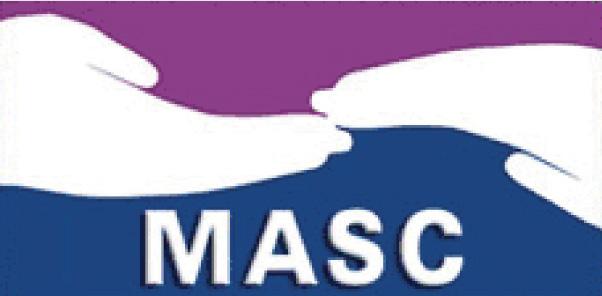
Creative Retirement Manitoba Inc. 204-481-5030, hello@crcentre.ca www.crcentre.ca
WINNIPEG
20 Fort Street Seniors Club
2200-20 Fort Street / FortStSeniors@Shaw.ca
Rady Jewish Community Centre 123 Doncaster Street / 204-477-7539 lmarjovsky@radyjcc.com / www.radyjcc.com
Rainbow Resource Centre 545 Broadway / 204-474-0212 ext 255 OTR@rainbowresourcecentre.org www.rainbowresourcecentre.org
A&O Support Services for Older Adults Inc.
200 -207 Donald Street 204-956-6440 / Toll Free: 1-888-333-3121 info@aosupportservices.ca www.aosupportservices.ca
Archwood 55 Plus
565 Guilbault Avenue / 204-416-1067 archwood55@shaw.ca archwood55plus.wildapricot.org/ Bleak House Centre 1637 Main Street / 204-338-4723 bleakhousecentre@gmail.com www.bleakhousecentre.com
Brooklands Active Living Centre 1960 William Avenue W 204-632-8367 / bpscc@mymts.net
Centro Caboto Centre 1055 Wilkes Avenue / 204-487-4597 ext. 1 executivedirector@cabotocentre.com www.cabotocentre.com
Charleswood Active Living Centre 5006 Roblin Blvd / 204-897-5263 info@charleswoodseniorcentre.org www.charleswoodseniorcentre.org
Crescent Fort Rouge 55 Plus 525 Wardlaw Ave. / 204-299-9919 cfruc55Plus@gmail.com www.crescentfortrouge.ca
Dakota Community Centre 1188 Dakota Street / 204-254-1010 ext. 217 seniorresources@dakotacc.com www.dakotacc.com
Dufferin Senior Citizens Inc.
377 Dufferin Avenue / 204-986-2608
Elmwood East Kildonan Active Living Centre 180 Poplar Avenue / 204-669-0750 healthrelations@chalmersrenewal.org chalmersrenewal.org
Fort Garry Seniors Resource Council 200 - 270 Donald Street / 204-792-1913 fortgarry@aosupportservices.ca www.aosupportservices.ca/resources/seniorsresource-finders
Golden Rule Seniors Resource Centre 625 Osborne Street / 204-306-1114 goldenrule@swsrc.ca facebook.com/goldenruleseniors
Good Neighbours Active Living Centre 720 Henderson Hwy / 204-669-1710 admin@gnalc.ca / www.gnalc.ca
Gwen Secter Creative Living Centre 1588 Main Street / 204-339-1701 becky@gwensecter.com / www.gwensecter.com
Headingley Seniors’ Services 5353 Portage Avenue / 204-889-3132 ext. 3 seniors@rmofheadingley.ca www.headingleyseniorsservices.ca
Indigenous Senior Resource Centre Inc. A1- 100 Robinson Avenue / 204-586-4595 executivedirector@isrcwpg.ca www.asrcwpg.ca
Manitoba Korean 55+ Centre 900-150 River Avenue 204-996-7003 / www.ksam.ca
North Centennial Seniors Association of Winnipeg Inc. 86 Sinclair Street / 204-582-0066 ncsc@shaw.ca / www.ncseniors.ca North Point Douglas Seniors Association 49 Euclid Ave. / 204-880-1655
Pembina Active Living (55+) 170 Fleetwood Rd. / 204-946-0839 office@pal55plus.ca / www.pal55plus.ca
The Salvation Army Barbara Mitchell Family Resource Centre 51 Morrow Avenue / 204-946-9153 sheila.keys@salvationarmy.ca
South Winnipeg Seniors Resource Council 117-1 Morley Ave / 204-478-6169 resources@swsrc.ca / www.swsrc.ca
Southdale Seniors 254 Lakewood Boulevard / 204-257-6171 gm@southdale.ca / www.southdale.ca
Sri Lankan Seniors Manitoba 113 Stan Bailie Drive 204-261-9647 / www.srilankanseniorsmb.ca
St. James-Assiniboia 55+ Centre 3-203 Duffield Street 204-987-8850 / info@stjamescentre.com www.stjamescentre.com
Transcona Council for Seniors 845 Regent Ave / 204-222-9879 tcs@mymts.net / www.transconaseniors.ca
Transcona Retired Citizens Org. 328 Whittier Ave. West 204-222-8473 / trco328@shaw.ca
Vital Seniors - 3 St Vital Road 204-253-0555 / stmary@mymts.net www.stmarymagdelenewpg.org
Winnipeg Chinese Senior Association 204-291-7798 / wcsa.wpg@hotmail.com www.winnipegchineseseniors.ca
BEYOND WINNIPEG
BEAUSEJOUR Beau-Head Senior Centre 645 Park Avenue 204-268-2444 / beauhead@mymts.net
BINSCARTH / RUSSELL
Senior Services of Banner County 204-532-2391 seniorservicesofbannercounty@gmail.com
BOISSEVAIN
Seniors’ Services of the Turtle Mountain Area seniorservicetm@gmail.com / 204-534-6816
BRANDON
Brandon Seniors for Seniors Co-op Inc. 311 Park Avenue E / 204-571-2050 reception@brandons4s.ca www.brandons4s.ca
Health Checks - 204-728-1842 brandonmbhealthchecks.ca healthchecksbrandon@gmail.com
CARMAN
Carman Active Living Centre 47 Ed Belfour Drive / 204-745-2356 www.activelivingcentrecarman.ca
CRANBERRY PORTAGE
Jubilee Recreation of Cranberry Portage Legion Hall 217 2nd Ave. SE / 204-271-3081
CRYSTAL CITY
Crystal City & District Friendship Club Inc. 117 Broadway St. / 431-867-0122 crystalcityfriendship@gmail.com
DAUPHIN
Dauphin Active Living Centre Inc. 55 1st Avenue SE / 204-638-6485 www.dauphinseniors.com
DELORAINE
Deloraine Community Club Inc. 111 South Railway Ave E / 204-747-2846
Seniors’ Outreach Services of BrenWin Inc. 204-747-3283 sosbrenwin@gmail.com / sosbrenwin.com

www.manitobaseniorcommunities.ca
ERICKSON
Comfort Drop In Centre 31 Main Street 204-636-2047 / areas@mymts.net
FLIN FLON
Flin Flon Seniors 2 North Avenue / 204-687-7308
GILBERT PLAINS
Gilbert Plains and District Community Resource Council Inc. / 204-548 4131 gpdcrc@mymts.net / gpseniors.ca
Gilbert Plains Drop In Centre 22 Main Street North / 204-548-2210
GIMLI
Gimli New Horizons 55+ Centre 17 North Colonization Road 204-642-7909 / gimli55@mts.net www.gimlinewhorizons.com
GLADSTONE
Gladstone Seniors Inc. 32 Morris Ave. North / 204-385-2205
GRAND MARAIS
Grand Marais & District Seniors 36058 PTH 12 / gmdseniors@gmail.com www.gmdseniors.ca
GRANDVIEW
Grandview Seniors Drop In 432 Main Street / 204-546-2272
HAMIOTA
Hamiota 55+ Centre & Restore Community Co-op Inc. 44 Maple Avenue / 204-764-2658
KILLARNEY
Killarney New Horizons Centre 520 Mountain Avenue www.killarneymbseniors.ca
Killarney Service for Seniors 415 Broadway / 204-523-7115 seniorservice@killarney.ca
LA BROQUERIE and STE. ANNE
Seine River Services for Seniors Inc./ Services Rivière Seine pour aînés Inc. 93 Principale Street 204-424-5285 / labseinerss@gmail.com seineriverservicesforseniors.ca
LUNDAR
Lundar Community Resources 35 Main Street / 204-762-5378 lcrc@mymts.net
MANITOU
Pembina Community Resource Council 315 Main Street 204-242-2241 / pembinacrc@gmail.com
MINNEDOSA
Minnedosa Senior Citizens Assoc. 31 Main Street S 204-867-1956 / mdsasca@gmail.com
MORDEN
Morden Activity Centre 306 N Railway Street / 204-822-3555 mordenactivitycentre@gmail.com www.mordenseniors.ca
NEEPAWA
Neepawa Drop In Centre 310 Davidson Street / 204-476-5103 Neepawa-dropin@outlook.com www.neepawa.ca/district-drop-in-center
NOTRE DAME DE LOURDES Club D’age Dor Notre Dame ndslchezsoi@gmail.com / 204-248-7291
PILOT MOUND Pilot Mound Fellowship Centre 203 Broadway Avenue / 204-825-2873
PLUMAS
Plumas Seniors Citizens Club Inc. 102 White Street / 204-386-2029
PORTAGE LA PRAIRIE
Herman Prior Senior Services Centre
40 Royal Road N. / 204-857-6951 hermanpriorcentre@gmail.com www.hermanprior.com
Portage Service for Seniors 40A Royal Road N. / 204-239-6312 psfsmeals@shaw.ca portageservicefors.wixsite.com/psfs
RIVERTON
Riverton Seniors Activity Centre 12 Main Street / 204-378-5155 rdfc@mymts.net / www.rivertonfc.com
SANDY LAKE
Sandy Lake Drop In Centre 100 Main St. / 204-585-2411
Municipality of Harrison Park - Age Friendly Initiative Committee 204-585-5310
SELKIRK
Gordon Howard Centre 384 Eveline Street / 204-785-2092 executivedirector@gordonhoward.ca www.gordonhoward.ca
SNOW LAKE
Snow Lake Senior Centre 71 Balsam Street 204-358-2151 / snowsrs@mymts.net
SOUTH JUNCTION
Piney Regional Senior Services 204-437-2604 / lgdseniors@gmail.com
STARBUCK
MacDonald Services to Seniors 204-735-3052 / info@mcdonaldseniors.ca www.macdonaldseniors.ca
STEINBACH
Pat Porter Active Living Centre 10 Chrysler Gate 204-320-4600 / ed@patporteralc.com www.patporteralc.com
STONEWALL
South Interlake 55 Plus 374 1st Street West - Oddfellows Hall 204-467-2582 / si55plus@mymts.net www.si55plus.org
SWAN RIVER
Swan River & District Community Resource Council 126 6th Ave N / 204-734-5707 resourcecouncil@srseniorservices.com
Swan River Senior Citizens Centre 702 1st Street North / 204-734-2212 THE PAS
The Pas Golden Agers 324 Ross Avenue / 204-623-3663 seniorsthepas@gmail.com
THOMPSON Thompson Seniors Community Resource Council Inc. 4 Nelson Rd. / 204-677-0987 thompsonseniors55@gmail.com thompsonseniors.ca
TREHERNE Treherne Friendship Centre 190 Broadway Street 204-723-2559 / jstate1066@gmail.com
VICTORIA BEACH
East Beaches Social Scene 3 Ateah Road / 204-756-6468 ebssinc1@gmail.com https://www.ebseniorscene.ca East Beaches Resource Centre 3 Ateah Road / 204-756-6471 ebresourcec@gmail.com https://ebresourcec.weebly.com
WINKLER
Winkler & District MP Senior Centre 102-650 South Railway Avenue 204-325-8964 director@winklerseniorcentre.com www.winklerseniorcentre.com


It’s never easy to learn your child may have medical complications. I want to introduce you to a family who had to hear that challenging news before their daughter was even born.
At a 28-week ultrasound Cortney and Mark Lee found out their daughter, Alexis, would be born with a congenital disorder. She was a preemie, born at 34 weeks with a left-sided Diaphragmatic Hernia —a hole in the baby’s diaphragm which causes abdominal organs to move into the chest. This prevents the baby’s lungs from developing properly, among other complications. And at just 40 hours old, Alexis went through repair surgery.
After three and a half weeks of highs and lows, Cortney and Mark were able to take Alexis home.
Alexis’ care team at Children’s Hospital helped us manage these worries.”
The staff at HSC Children’s Hospital supported the Lees in many ways — from taking the time to explain procedures, to noticing when Cortney and Mark needed a break and insisting they take one — staff even sent them on a date to a Winnipeg Jets game.
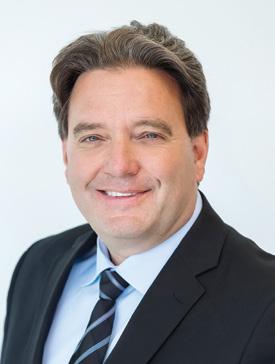
Stefano Grande Healthy Living
“After having Alexis and going through the immediate hospital stay and various interventions, we found ourselves very anxious and overprotective,” says Cortney. “Talking through our feelings and worries with health professionals and
“Every time we step foot in Children’s Hospital, we say this place is full of very special people,” says Cortney. “Each time we are blown away by the exceptional care each and every person gives.”
Alexis feels very connected to the team at the hospital too, and when she was younger all her stuffed animals and dolls were named after the health care staff that cared for her.
Now Alexis is doing great, and she starts grade 8 in September 2024. She still goes to HSC Children’s every six months for breathing tests and check-ups.
“Having been through scary times with your kids,
I feel like the worry never really goes away, you just learn how to manage it.”
Alexis loves trying all sorts of physical and creative activities like soccer, dance, swimming, piano, volleyball, and basketball — all activities her family never thought she’d get to do. The care, equipment, and treatment Alexis received at Manitoba’s Children’s Hospital made that a possibility.
“Without donations and support, most of the specialized equipment necessary for Alexis’ care wouldn’t have been available,” says Cortney.
To show their gratitude for the hospital that helped them so much, Alexis and her family make and sell ornaments and donate all the funds to the Children’s Hospital Foundation. They plan to continue giving back to help other children like Alexis.
“Each little gift felt like a million dollars to us in that hospital,” says Cortney.
Right now, the Children’s Hospital team needs critical equipment like a CO2 monitoring system to help newborns like Alexis. Please support this life-saving tool with a donation today at goodbear.ca/fall.
Stefano Grande is the president and CEO of Children’s Hospital Foundation of Manitoba.
This month, we thought we would talk about something that most people don’t even want to think about – emergencies. Usually, the term “preparedness” aims to remind people to be prepared for disasters or emergencies. Of course, the idea is for people to be prepared for disasters in their homes, business or community, but in veterinary medicine, we always like to put a little twist on things and encourage people to think about their pets.
disaster, are you prepared?

Officially, National Pet preparedness in Canada is in June. However, considering the smoke in the air and the plethora of fires that we hear being battled across Canada every summer, it always seems to become all the more relevant as summer progresses. In light of this, we encourage you to ask yourself: In the event of an emergency or natural
If you have a pet in your care, you may have already considered what your options are if something unexpected were to happen. Individual circumstances will always dictate some plans, however there are certain things that everyone can do ahead of time to ensure that everyone gets out in case of an emergency. First and foremost, identification is paramount. Not only ensuring your pet has identification (i.e. a tattoo and/or microchip), but also ensuring the information linked to that identification will lead back to you. If you’ve moved since your pet’s identification was put into place (for most animals, this was at the time of their spay or neuter), it may be good to double check. Emergency stickers are easy to acquire and place and can be helpful if you are indisposed. The loca-
Fundraising Hopper Stall: Conducted by Sri Lankan Seniors Manitoba
Sri Lankan Seniors Manitoba conducted its annual Hopper Sale Outlet on July 27, 2024 from 8:00 am to 1:00 pm at the Chancellor School playground for the benefit of the annual six-a-side softball tournament organized by Bloomfield Cricket and Cultural Club.
In 2011, we started this event and have since conducted it annually as a fundraising project under the leadership of Indra and Upali. Not only does the event attract a large number of spectators but players rush for hoppers continuously. To meet the demand, more than ten volunteers prepared hoppers using ten hopper pans.
Reeni arranged for all attendees to take home packs. All sang the birthday song together and gave her their good wishes, too.

Reeni’s birthday and Participation of Pushpika and Banda Hearth
Sri Lankan Seniors Manitoba held its monthly event on July 16, 2024, at the outdoor garden at The Leaf in Assiniboine Park. The main activity was walking, followed by a picnic lunch. Reeni Fernando’s birthday was celebrated by cutting three birthday cakes. There were nearly 30 participants. She served three pieces of cake and that was too much for one person. As a result,
Reeni gave a ride to Nirmali Peiris from St. James. Nirmali joined as a newcomer.
Pushpika and Banda Herath attended. Both are close relations of SLSM member Chandraguptha Ratnayaka. When Pushpika and Banda were in Minneapolis, their home was the focal point for most Sri Lankan Winnipeggers to visit and stay overnight with them. A few years ago, both moved to Austin City in Texas.
Radhika and Sarath:
Visit to Winnipeg Buddhist Vihara
Sarath told me that he does not know the new Chief Monk in the Manitoba Buddhist and Cultural Association and requested that I arrange a meeting with him. I spoke to Ven. Balangoda Sugathasiri Thera (Bhante) and set it up on Aug 13, 2024 at 2:00 pm.
Bhante said that there are two other Monks in this Vihara and type of services conducted for the community. Sarath and Radhika explained both are early settlers in Winnipeg and are now settled in Chilliwack, B.C. where they
tion of kennels and leashes should be well known to everyone in the household, and easy enough to access quickly.
Your veterinarian can also help. Since many emergency housing facilities don’t allow pets, be prepared that you may have to be separated from them. Ensure vaccinations and deworming are up to date, thereby allowing a potentially rushed and last-minute booking into a hotel, a boarding facility, or even with friends and family. Some veterinary clinics may even board patients in the case of an emergency. Ensure your pets are licensed and that both their rabies tag and license are attached to their collar.
An emergency kit or “go-bag” is also recommended. The contents will vary depending on your pet’s species, specific needs and medications, but should at least include a picture of you and your pet, as well as a first aid kit. A paper copy of records is helpful. Consider keeping a pre-made checklist of what you need to grab in case of an emergency (food, water, medications) so things

are spending their retirement life. They discussed this for more than two hours. Mainly talked about how they established MBVCA.
Lessons Learned?
(1) Non-Buddhist contributed for the first fundraising and continuously attended for the main events of the Temple
(2) Agreed there is a need for a separate hall to conduct regular events and retreats. Bhante explained that due to the zoning issue there is a delay to start new constructions
Folklorama’s Tamil Pavilion
My daughter Rowanthi performed on the Folklorama stage about seventeen years ago. As a result, she met her good
aren’t forgotten. And don’t forget to set yourself regular reminders to verify and replace expired content as needed.
Consider keeping an electronic copy of their vaccination record, licensing, and ID information somewhere that can be accessed via phone or away from home. And of course, don’t be caught off guard! Some emergencies can’t be planned, of course, but keep an eye out for alerts and warnings in your area. Finally, the province does have an Animal Care Line which may be used to coordinate requests for assistance at 204-945-4800 (in Winnipeg) or 1-888-945-8001 (Toll free), and the Winnipeg Humane society has an Emergency Boarding program to provide temporary housing in emergency situations.
Until next time fellow paw-print loving friends!
Silver Heights Veterinary Hospital is proud to serve the Winnipeg region, and is located on Ness Avenue in St. James. Contact them at 204-504-5600 or visit their website at silverheightsvethospital.ca
old dancing partners and her friends. Nandi Sokkalingam helped her to get this opportunity, and she trained her as well. Nandi is a Bharatanatyam teacher. Bennita and Anselm were known to us during their stay in Sri Lanka.
Currently, Bennita is the Vise President of the Tamil Cultural Society. She introduced the President, Thananjeyan. Thanan told me he had contacts with me early. We met Elian Joseph, Board Member of Sri Lankan Seniors Manitoba.
Well before starting the show multicultural spectators came with their eastern cultural food-plate for dinner to their allocated table. About 30-40 performers with different age groups conducted more than eight wonderful traditional Indian dances for one-hour with more than a hundred people in the audience.
For a day they conducted three onehour shows and we participated in the first show for the day on Aug. 15, 2024, 6:45 pm at the Burton Cummings Community Centre, 960 Arlington Street. Although it was drizzling, four volunteers were in the car park and more than fifteen volunteers served inside the hall. This is a hard task and must be continued for seven days.
My wife Chandani, daughter Rowanthi, granddaughter Chamathi, and I participated on the fifth day. All of them served us with smiling faces and we are thankful TCS for their magnificent event.


• Life Lease independent living for 55+ in a close-knit community.
• Prime location with indoor access to shopping, dining, medical services, arena, the Y and Millennium Library.
• security and emergency response services for added peace of mind.
• spacious one-bedroom and two-bedroom options available.
• features include in-suite washer and dryer, balcony enclosures, and heated parking.
• suites can be customized according to your preference.
• Cat-friendly.



“Enhancing the lives of older Adults of South Winnipeg” Enjoy a well-balanced Life!


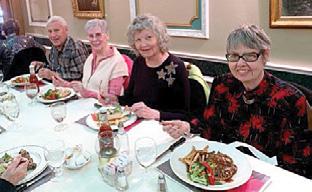
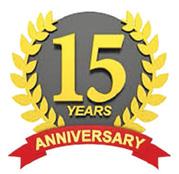
Community
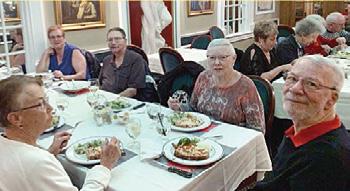

Creativity:
